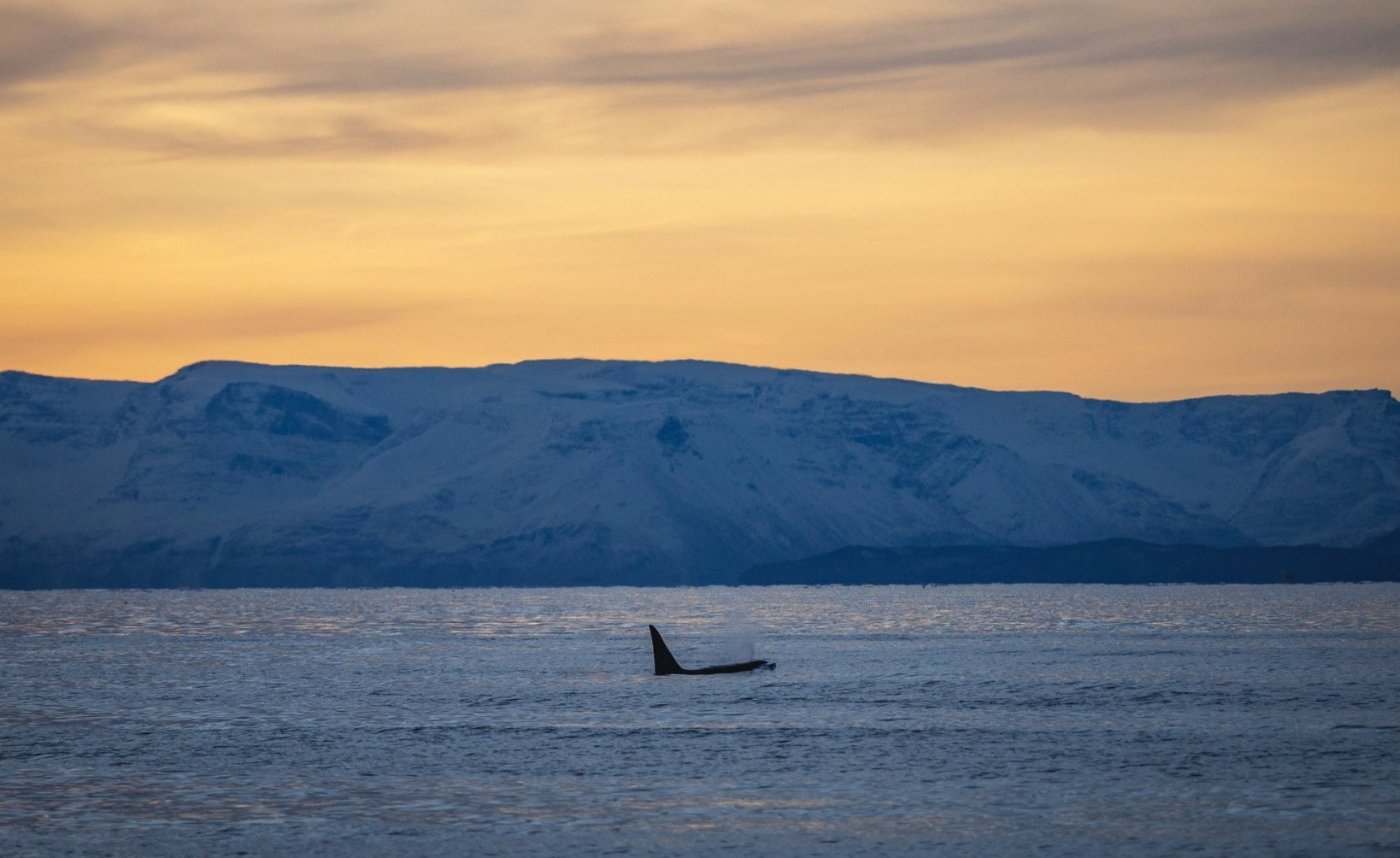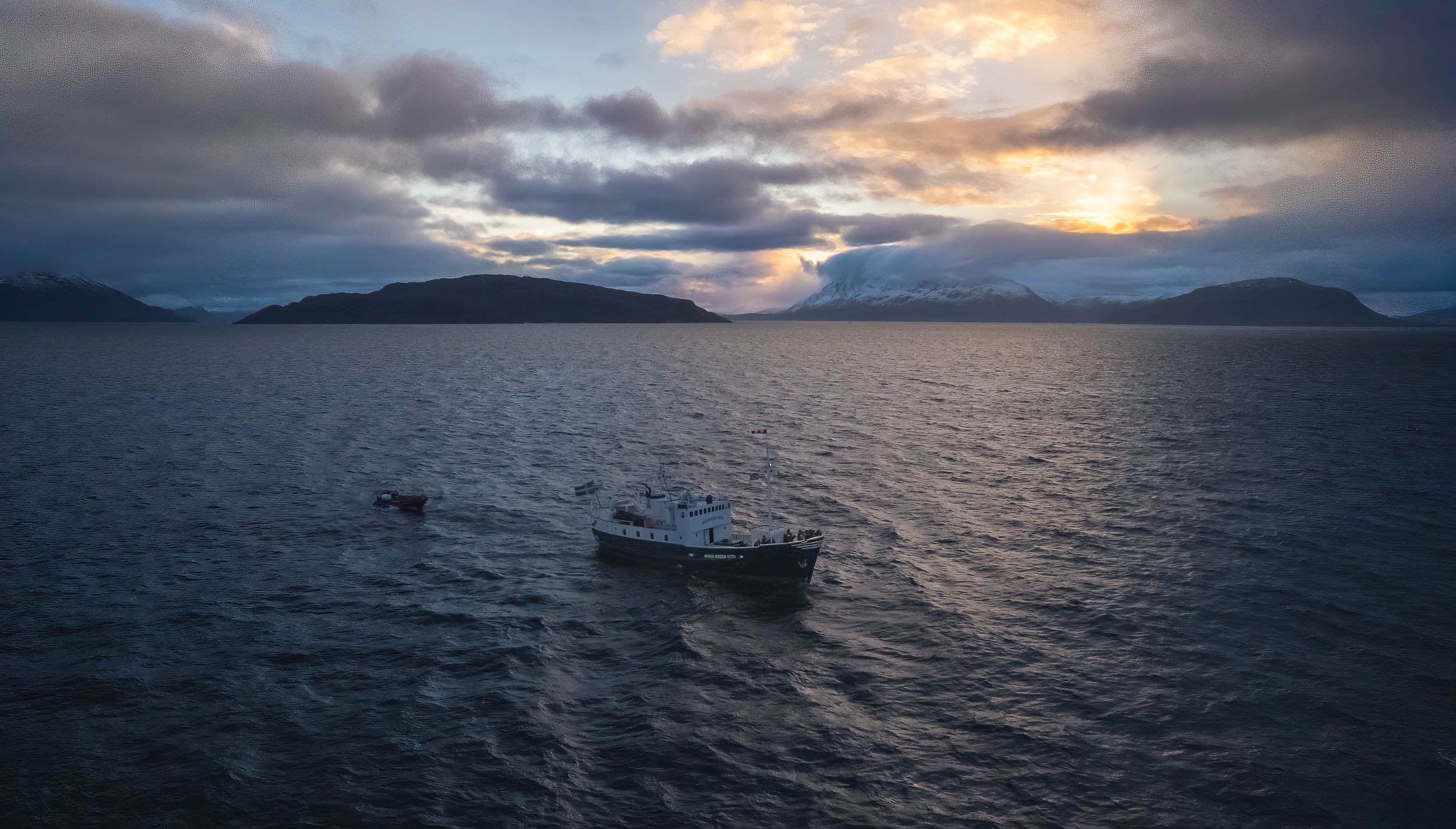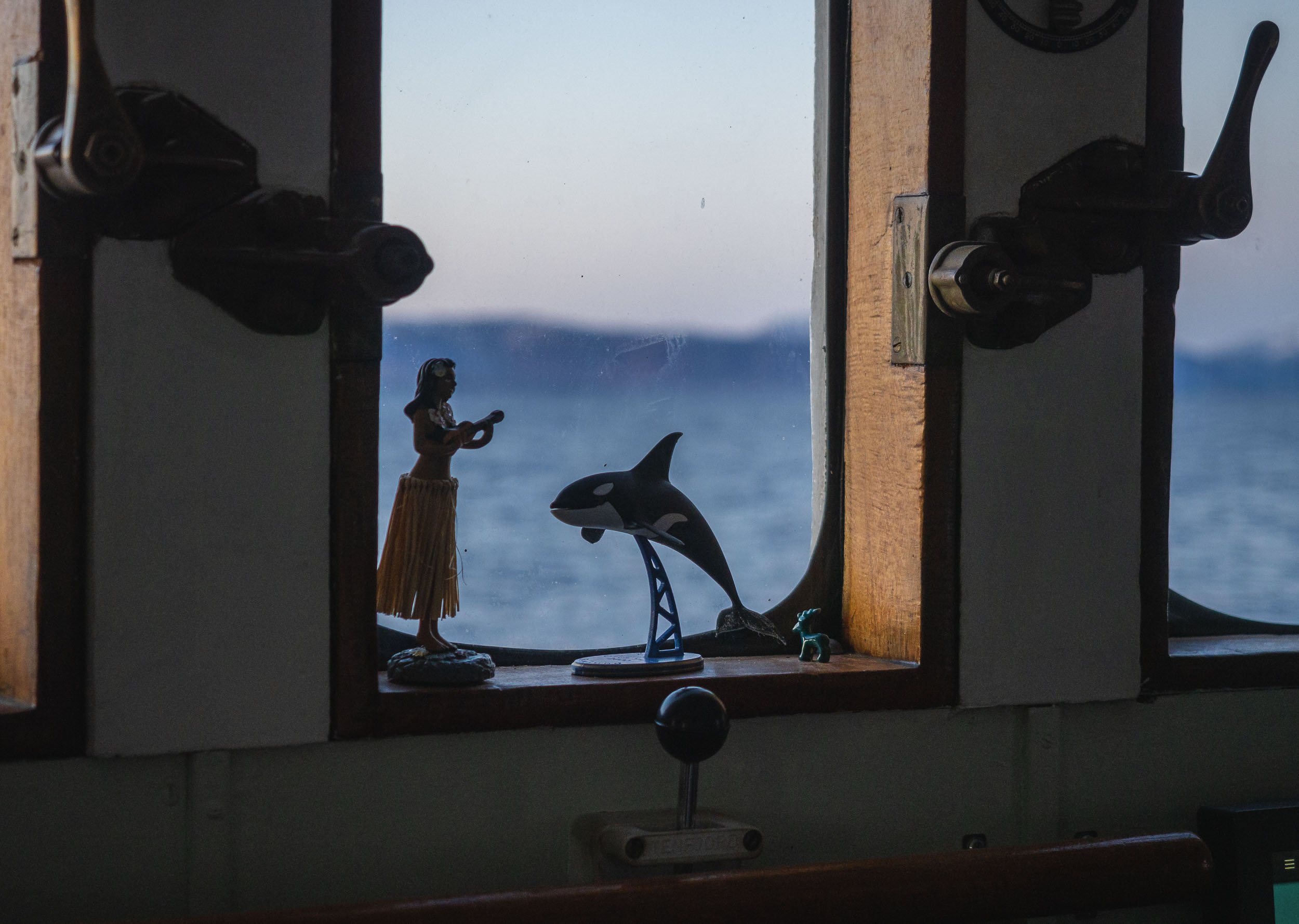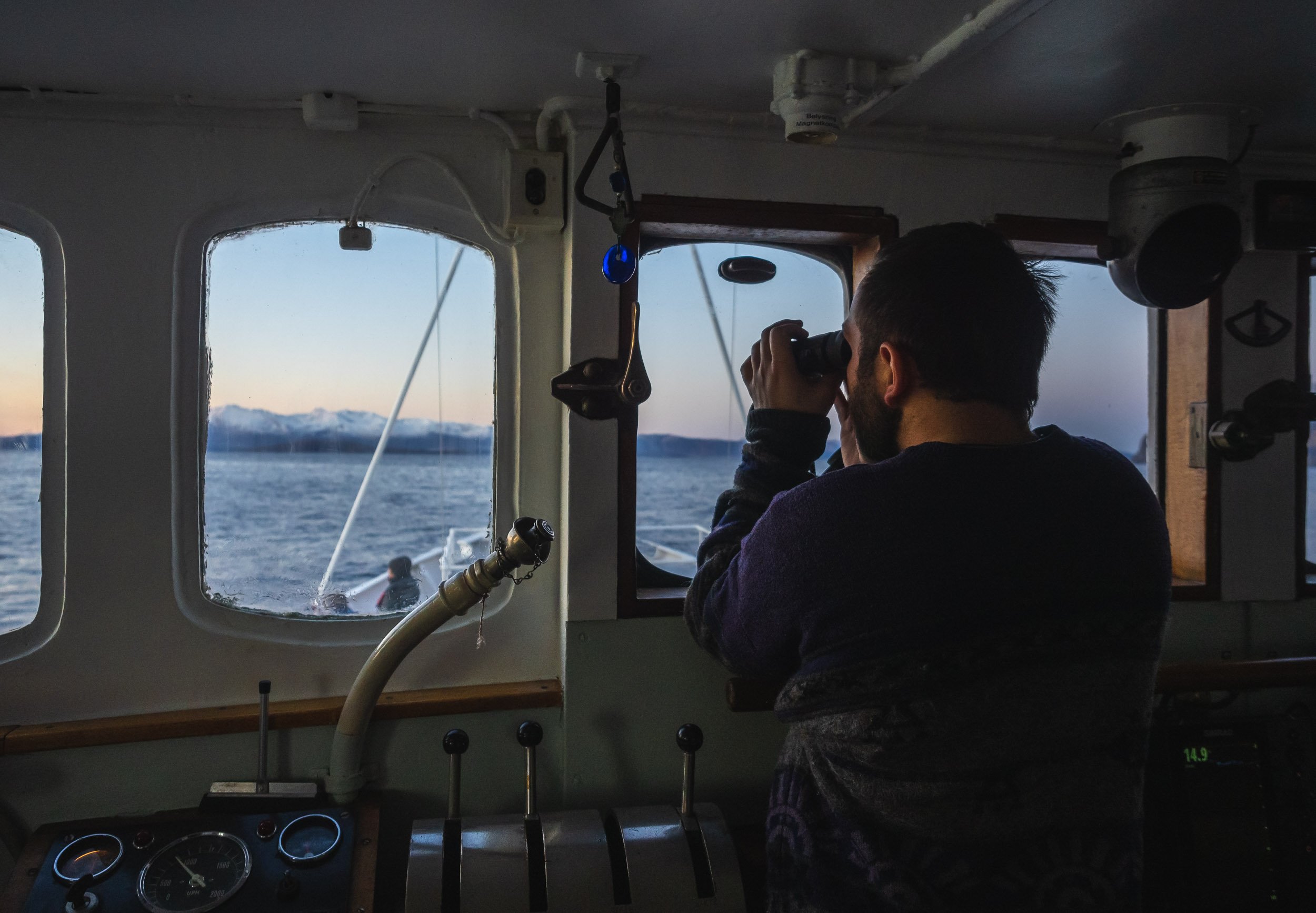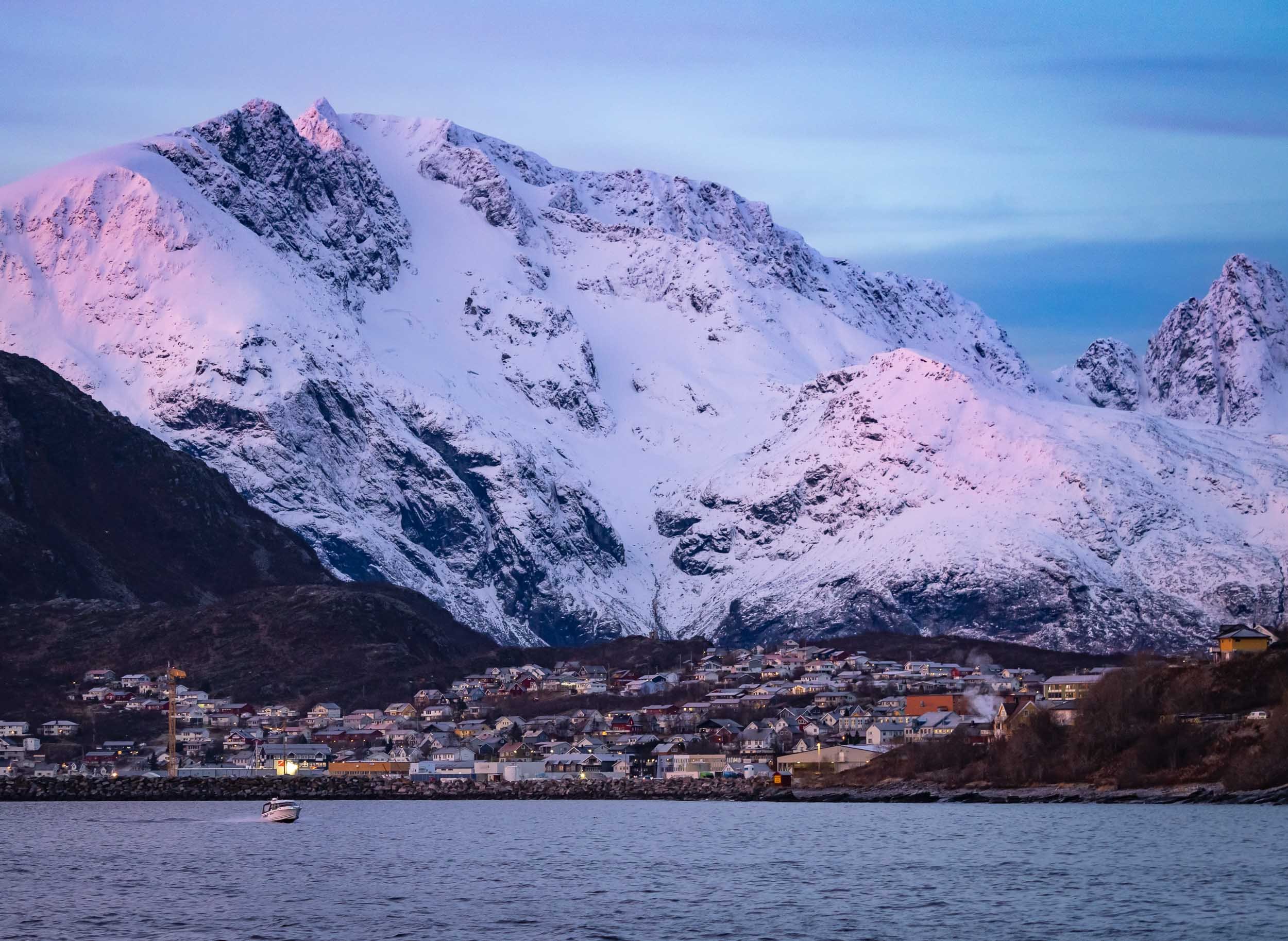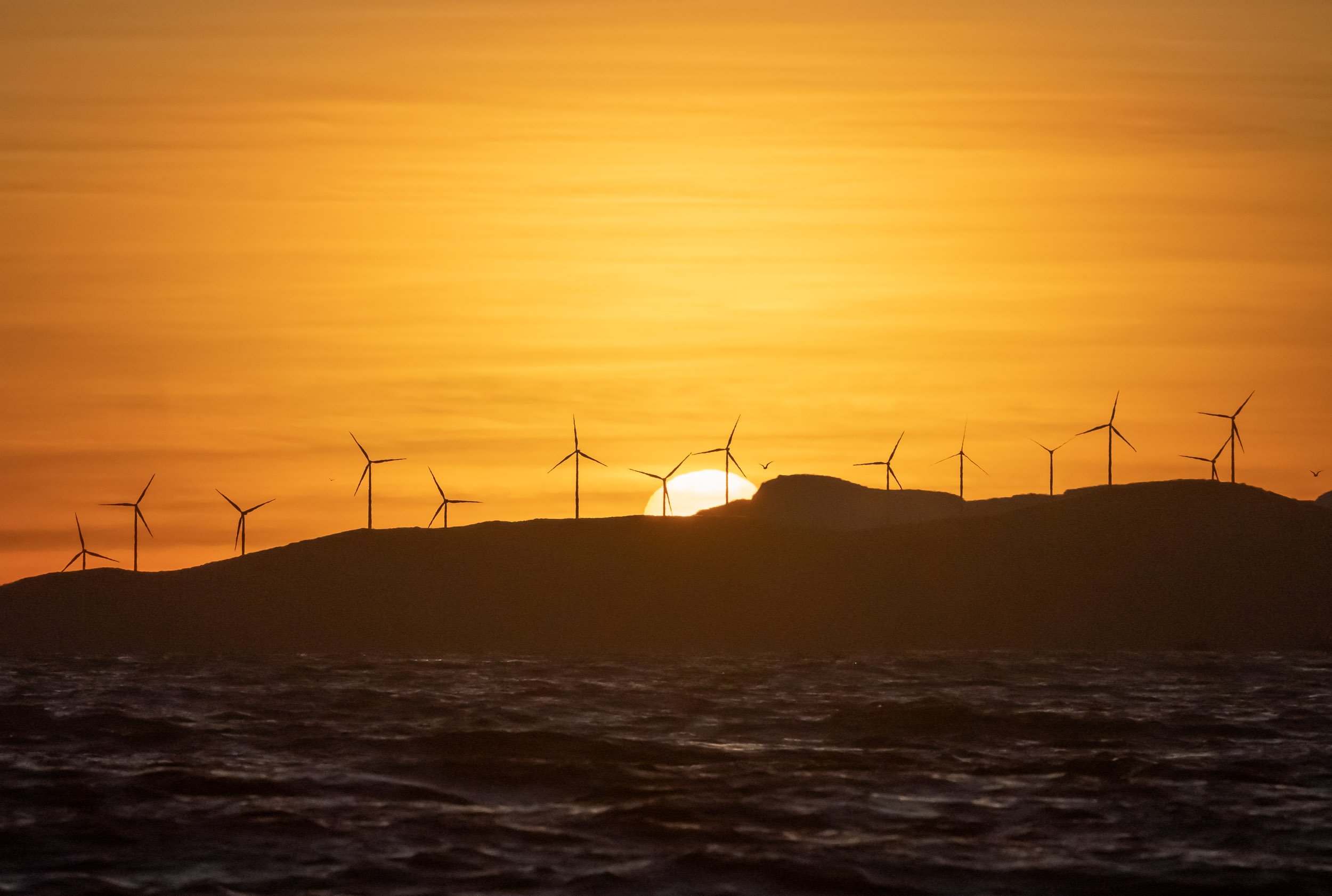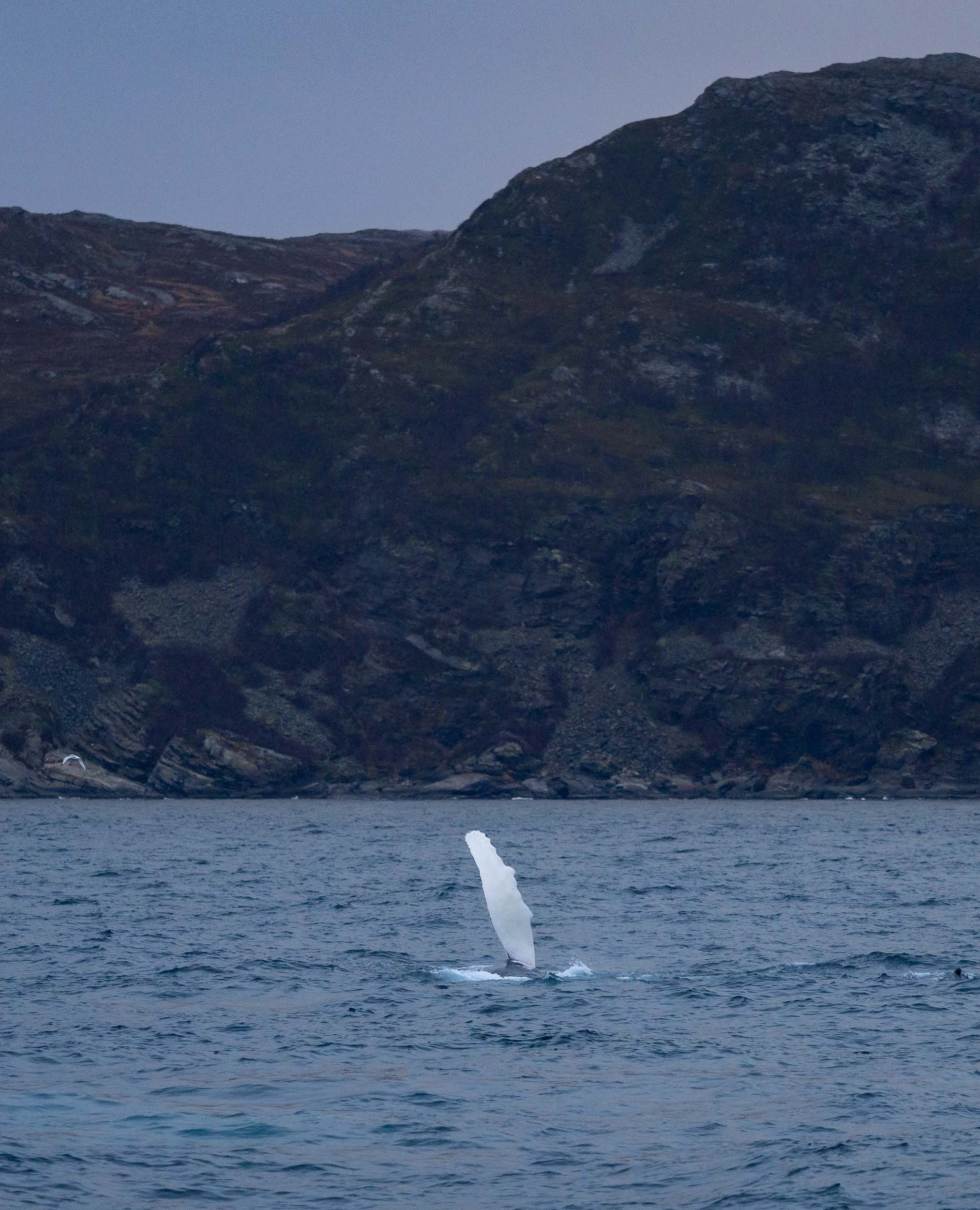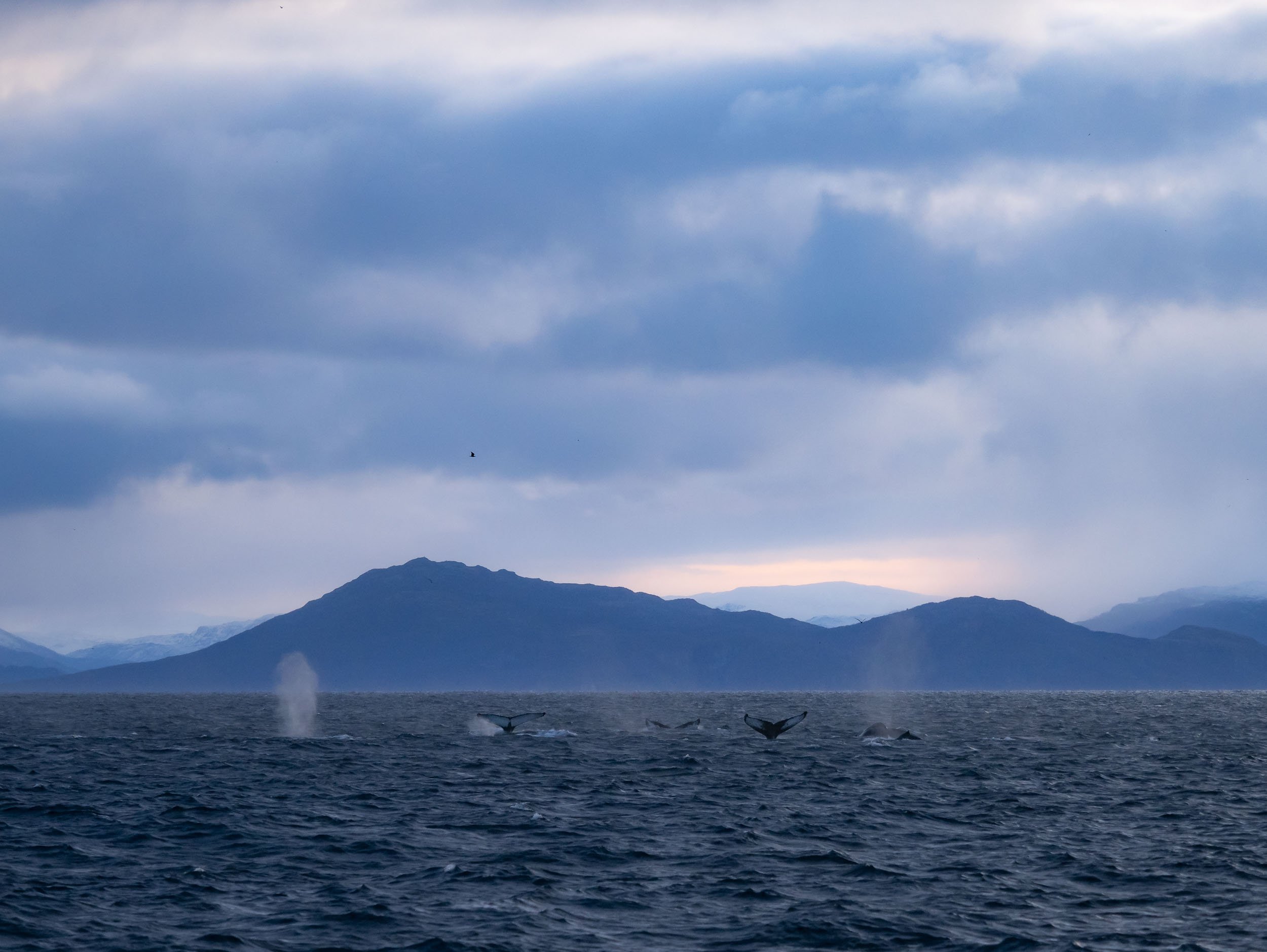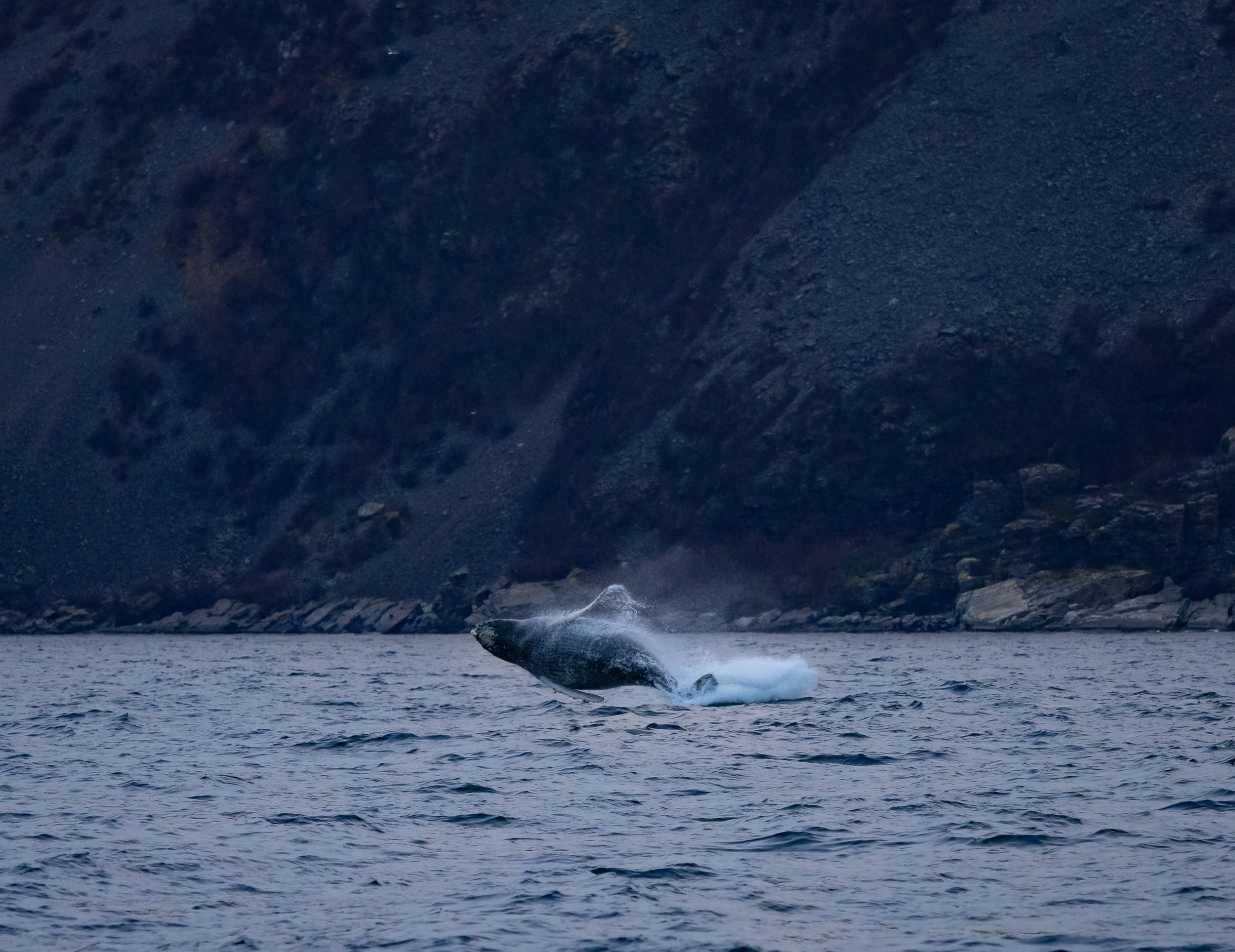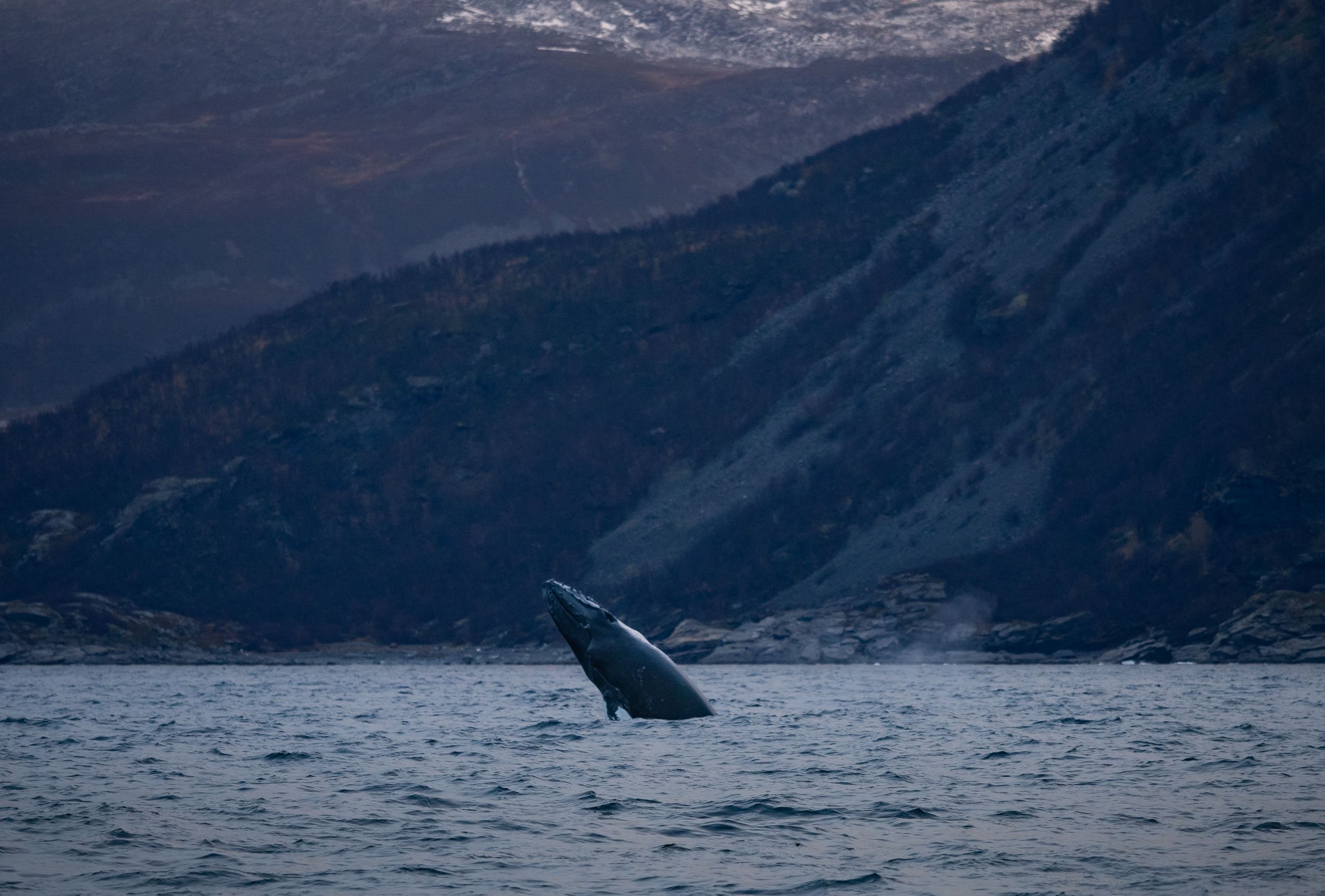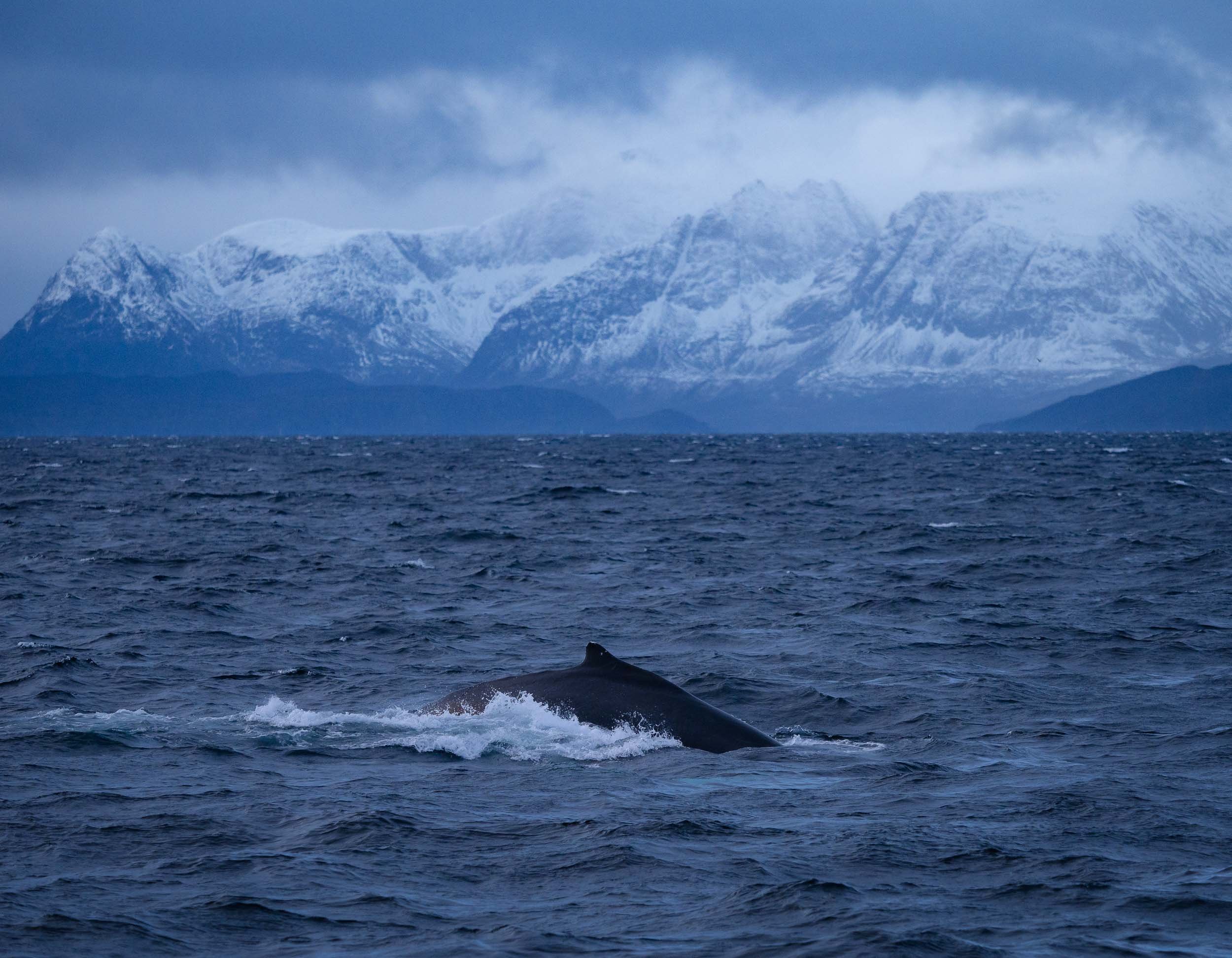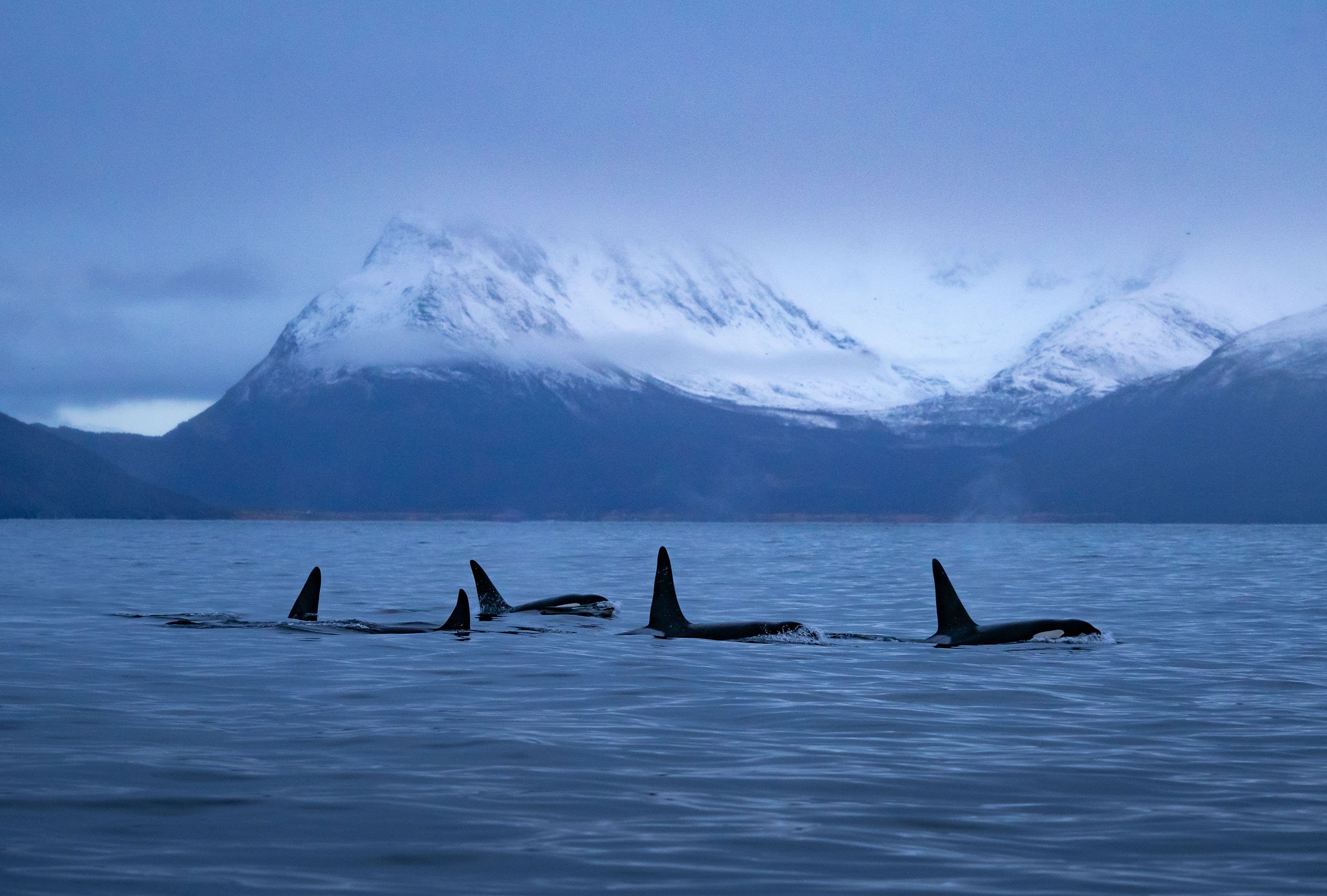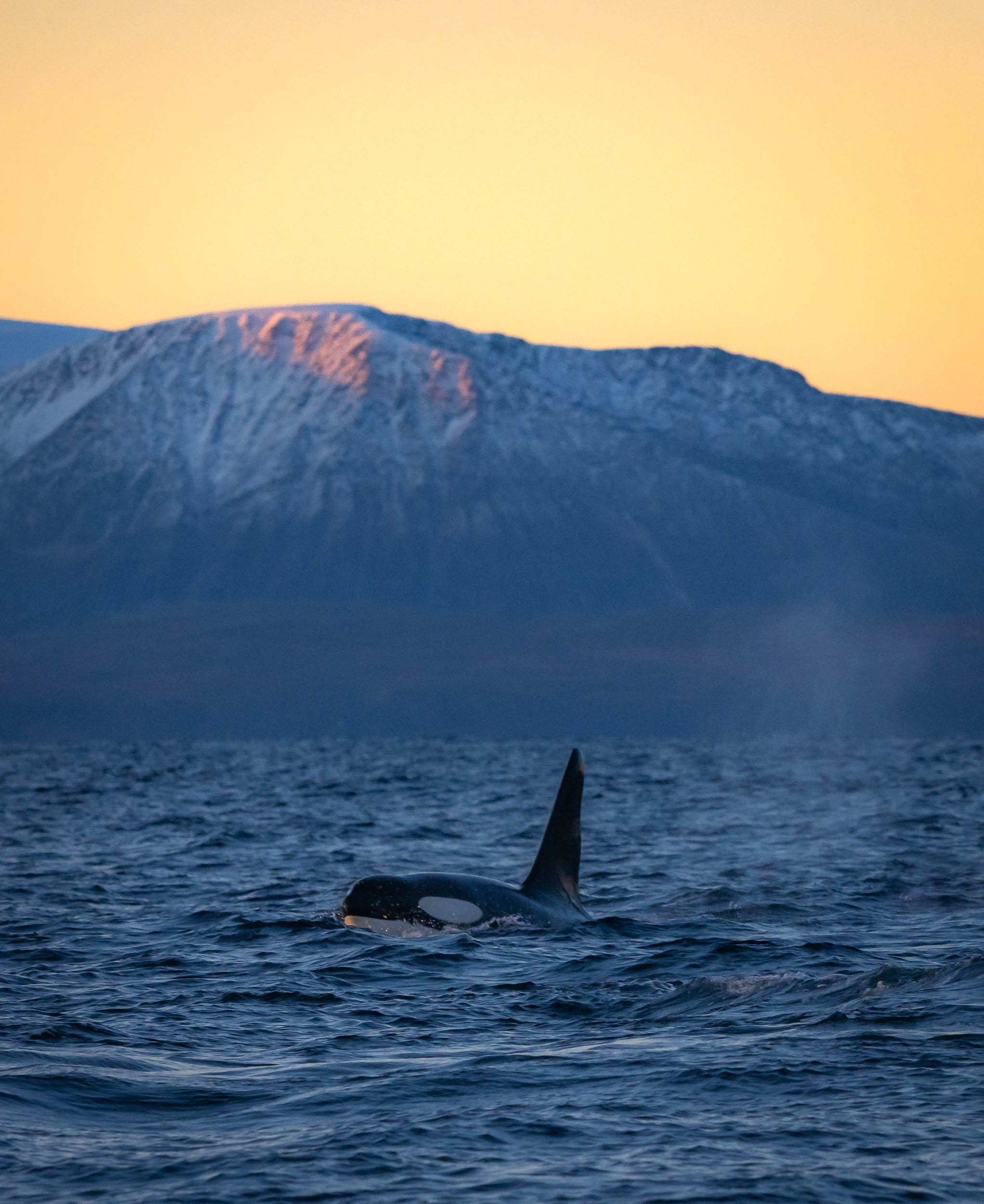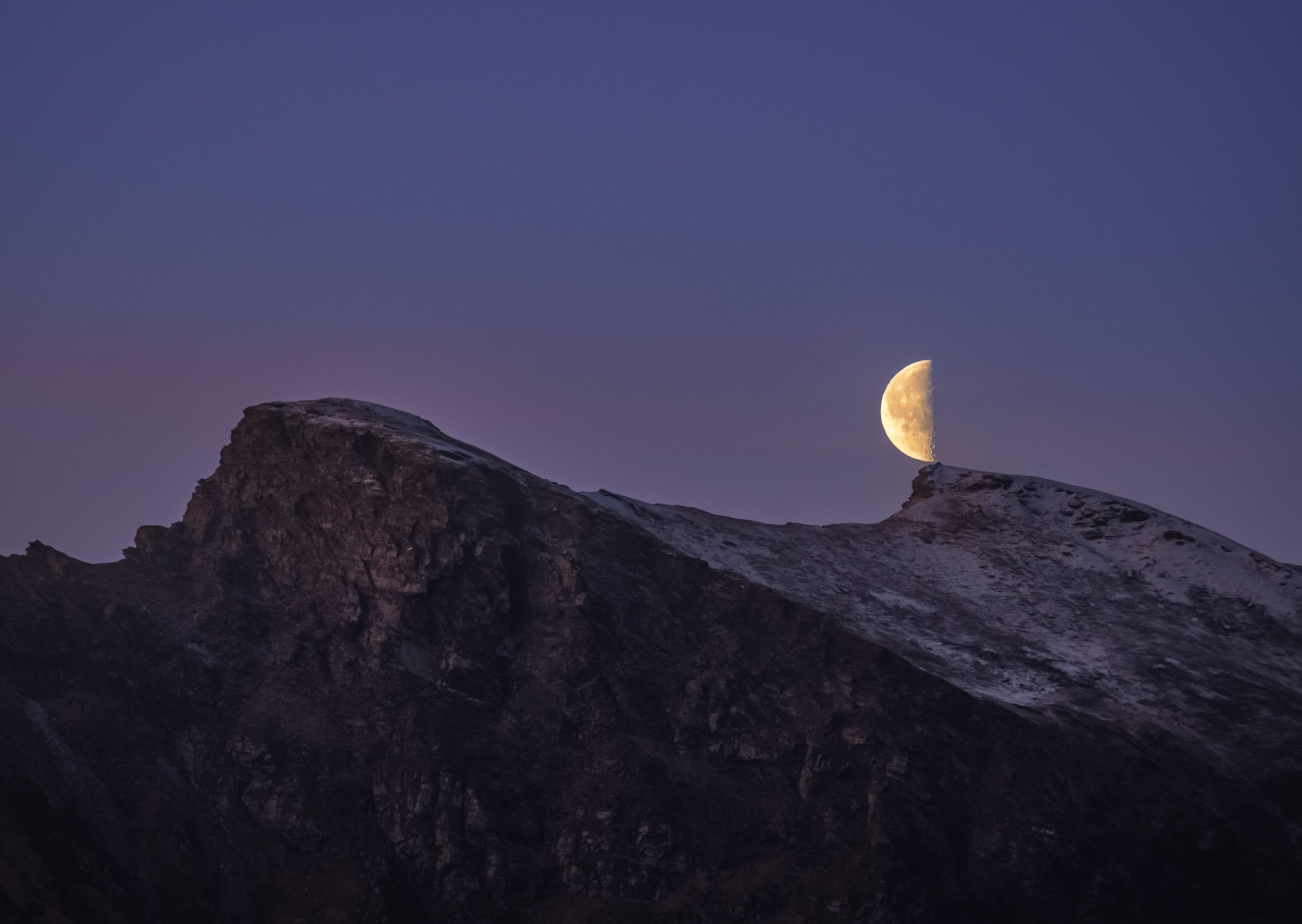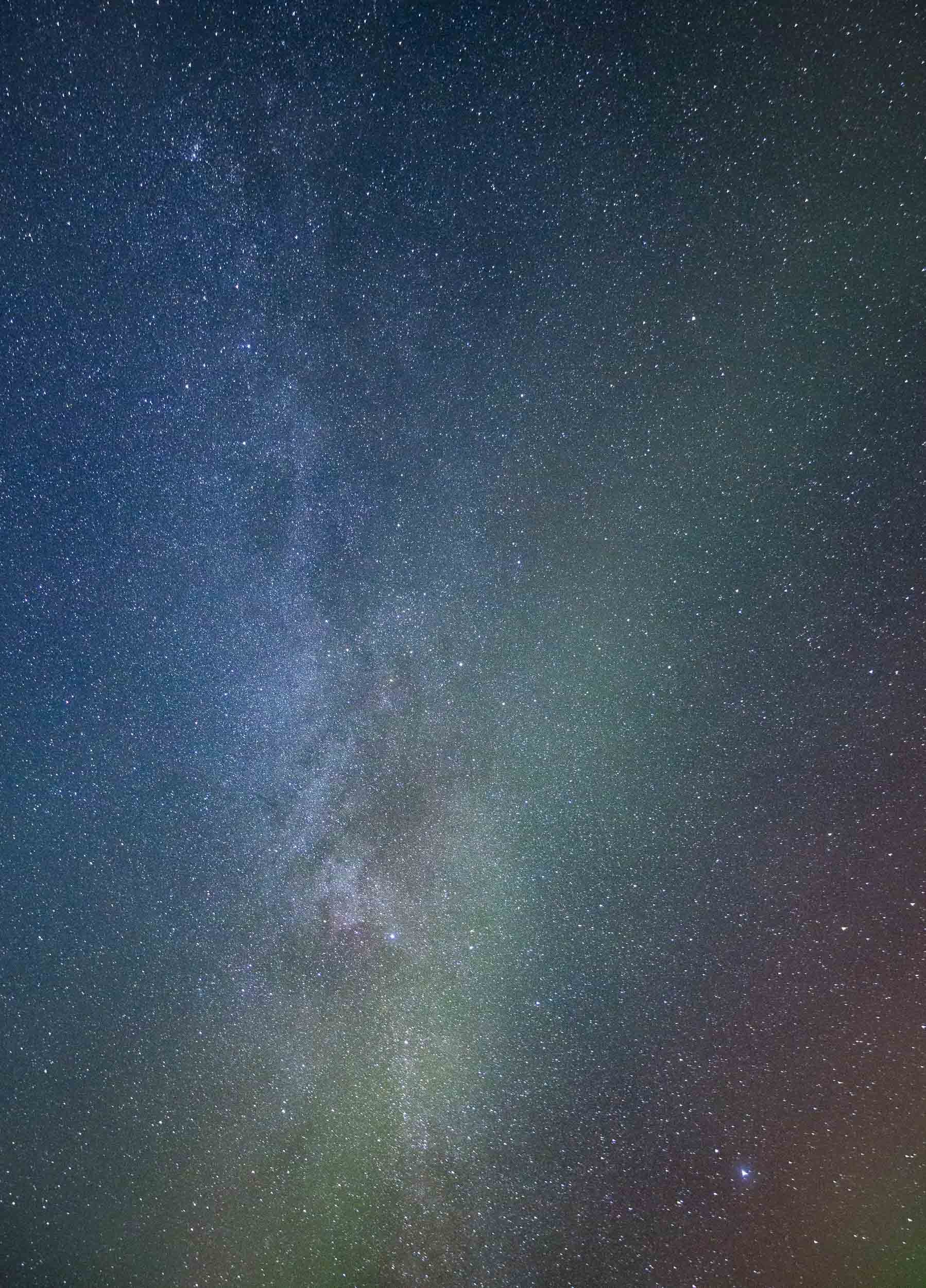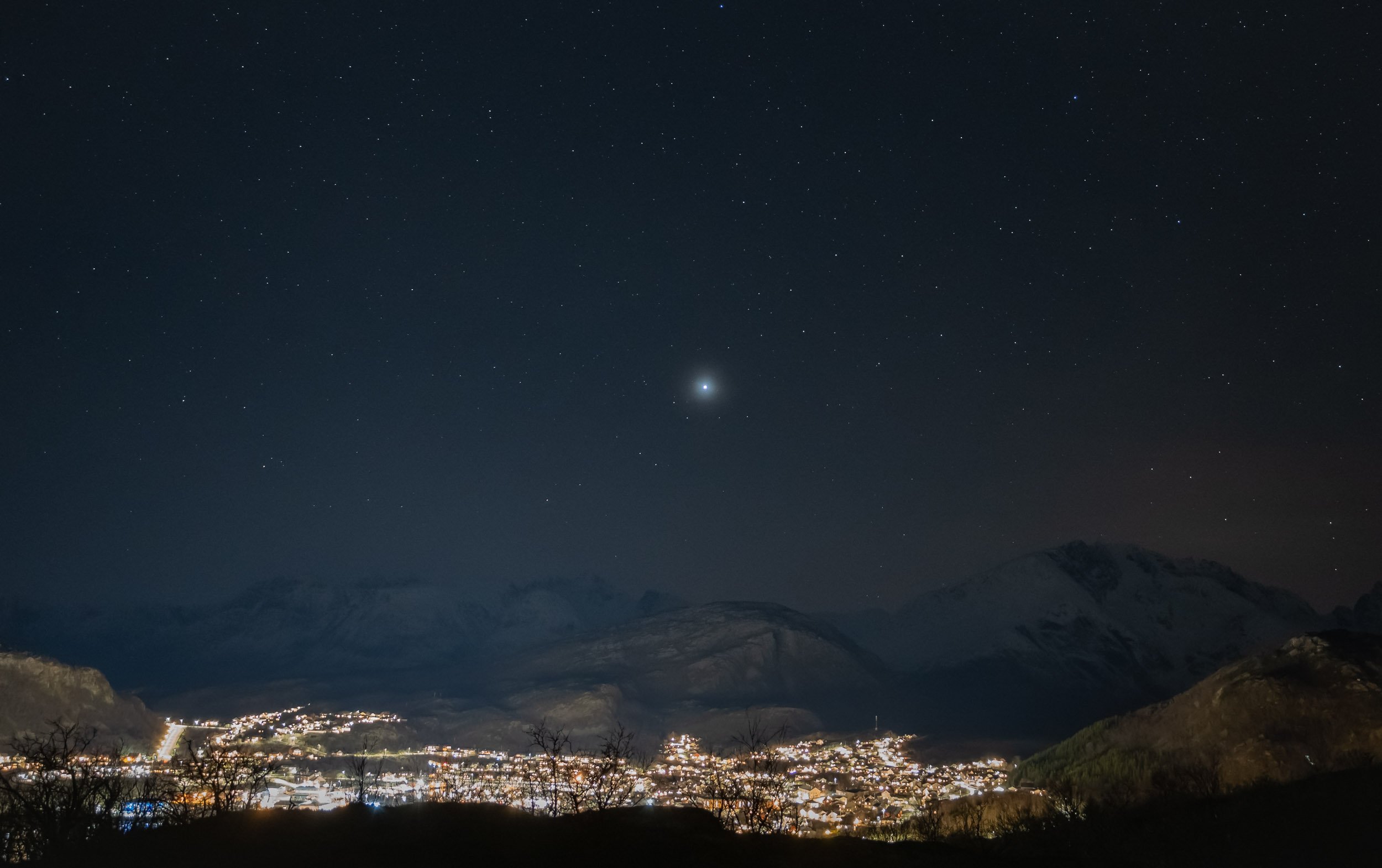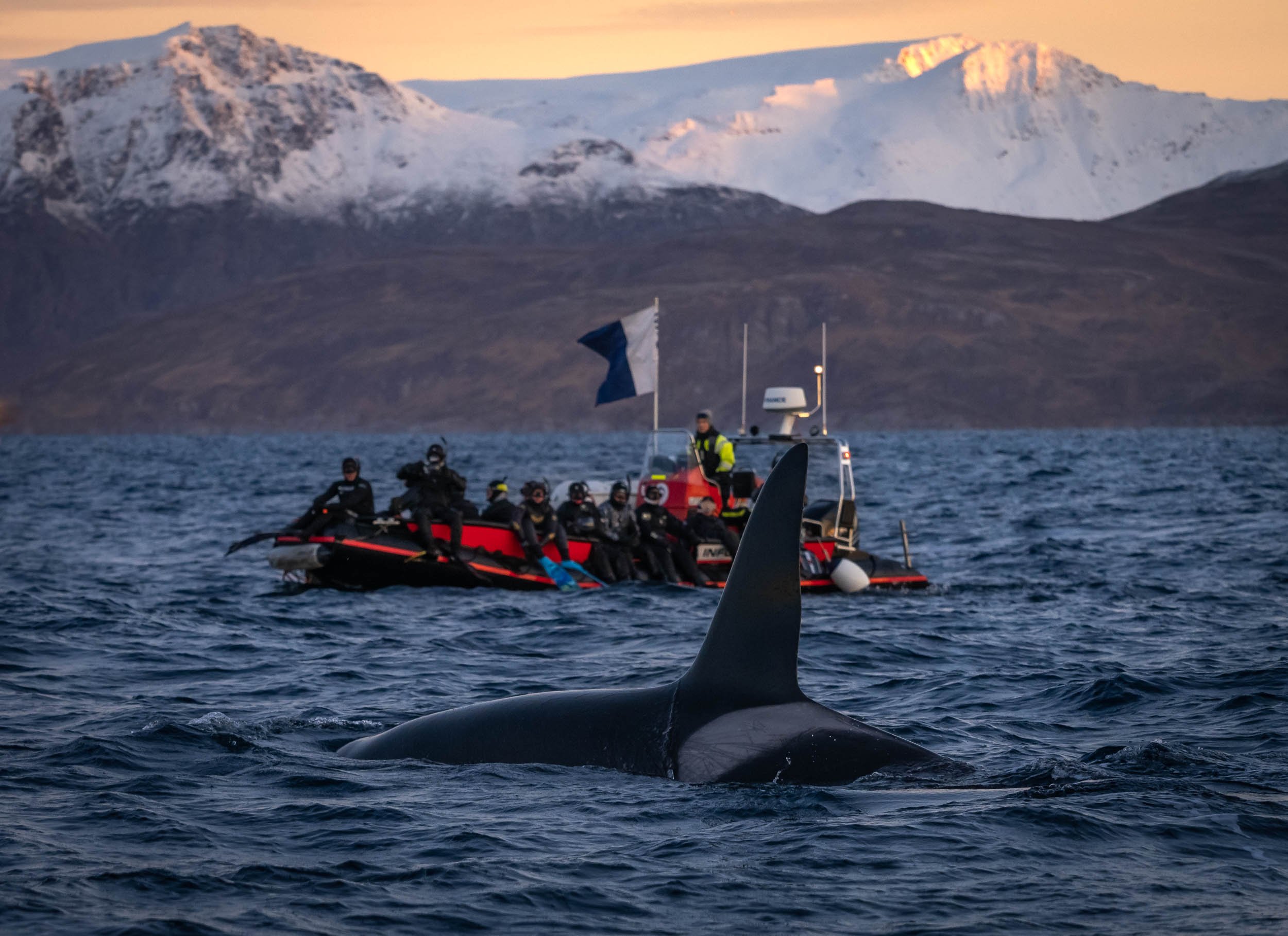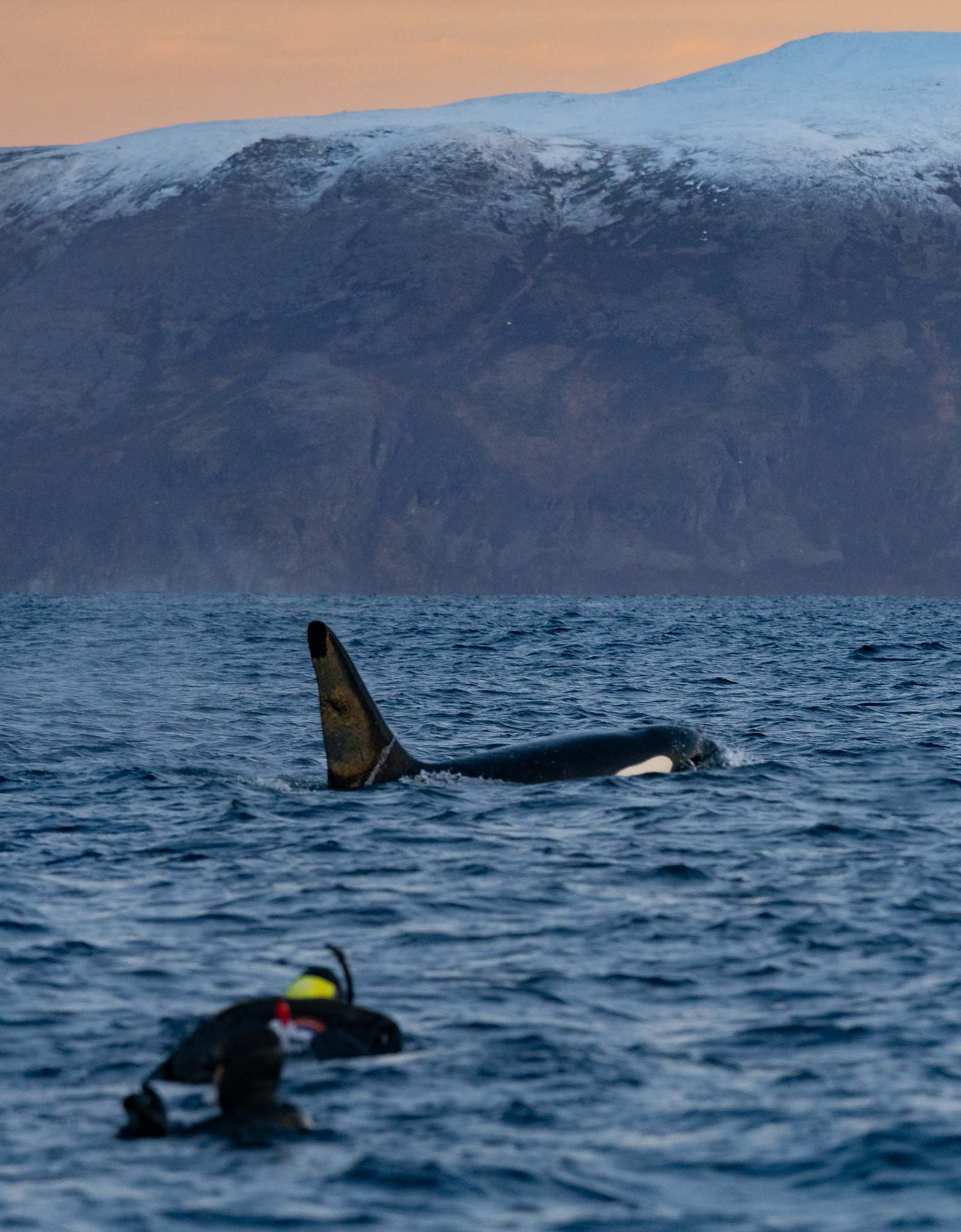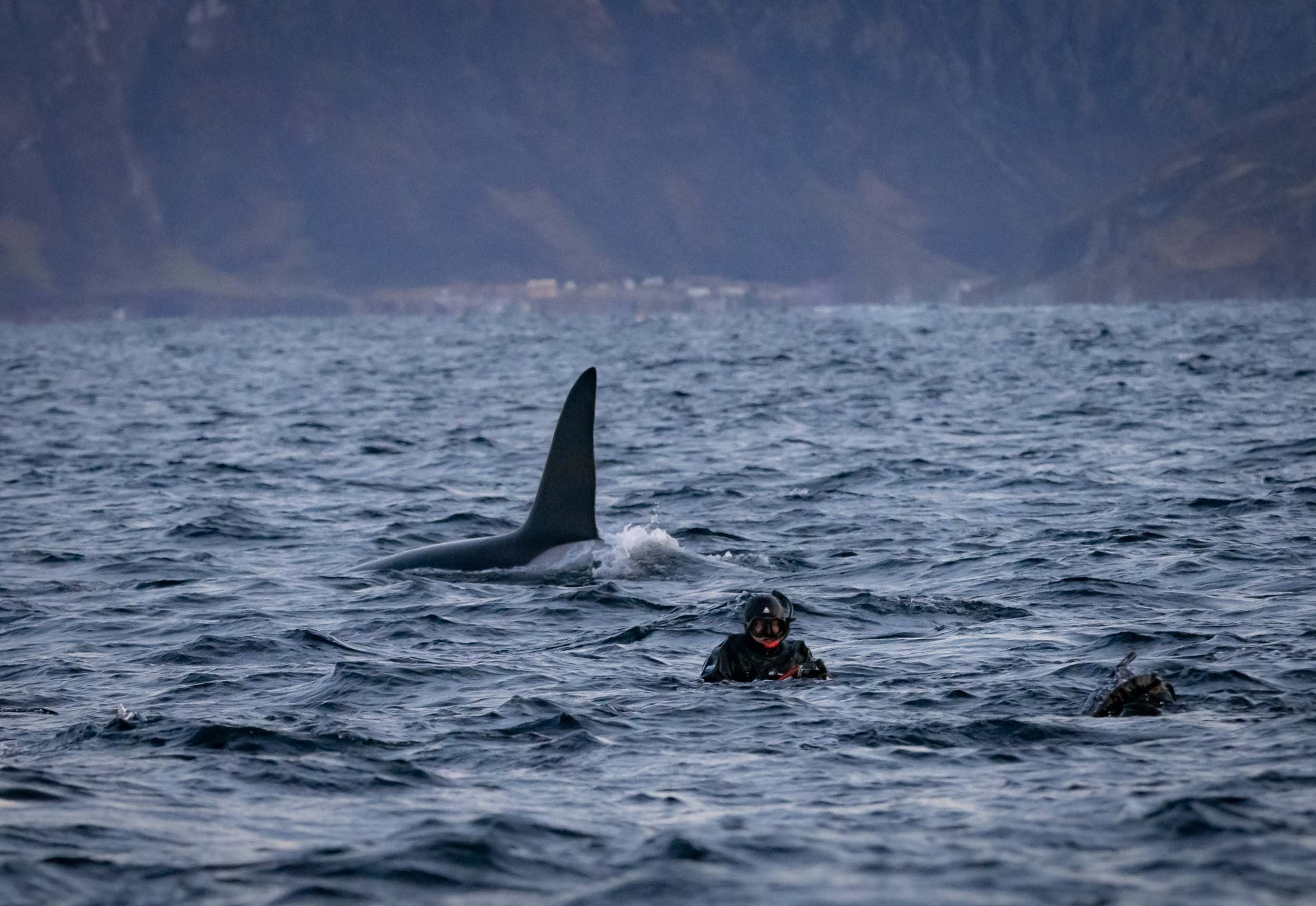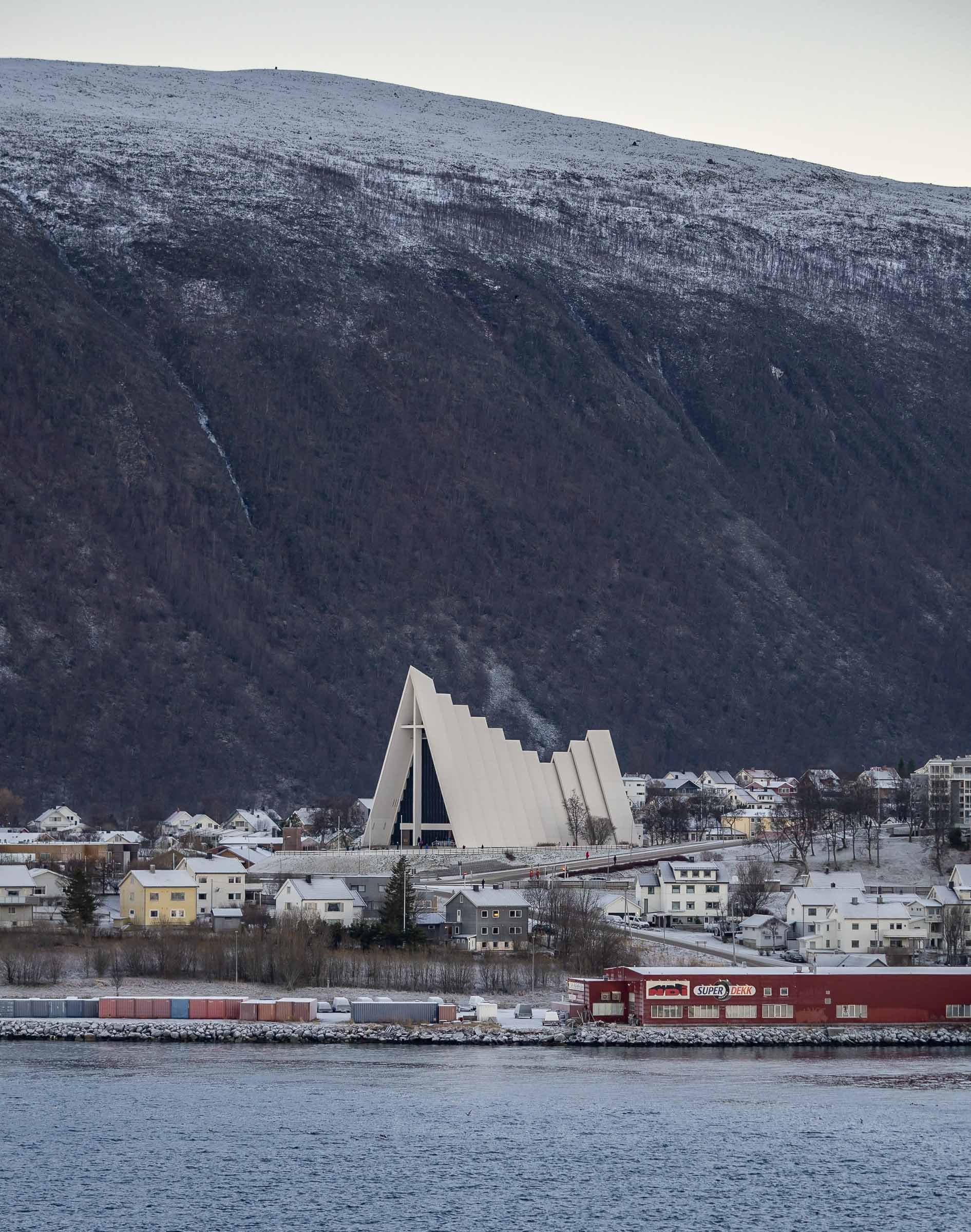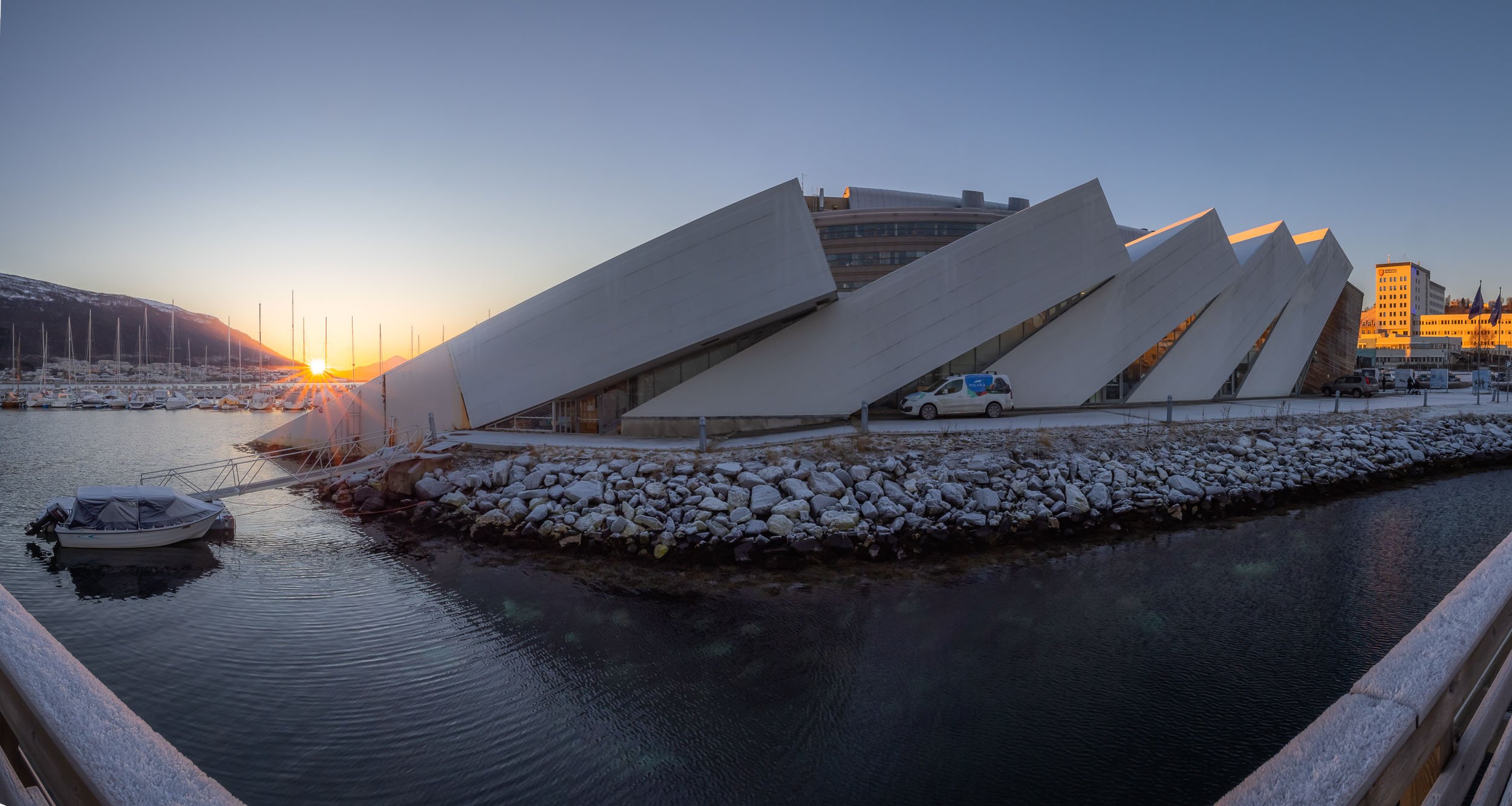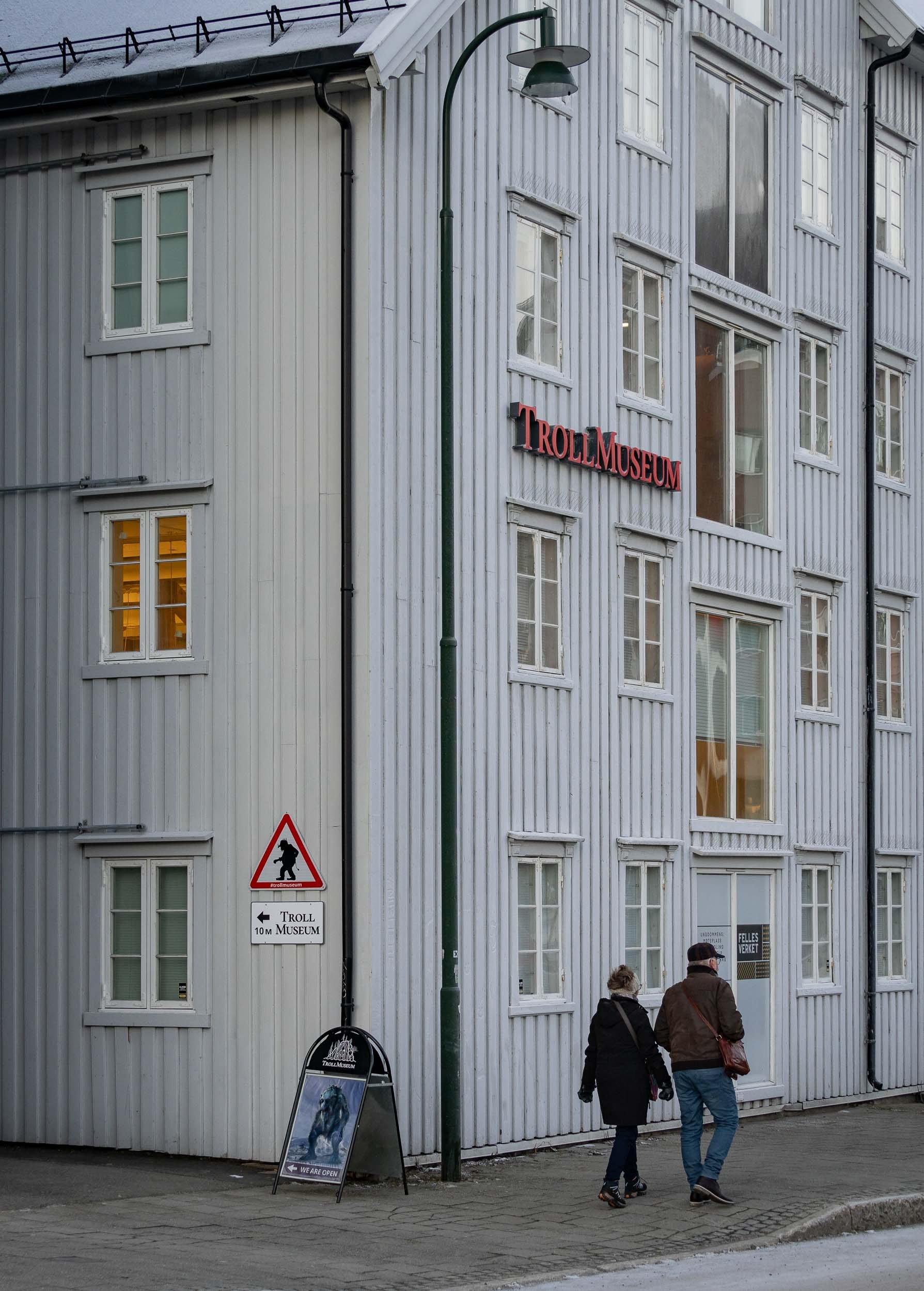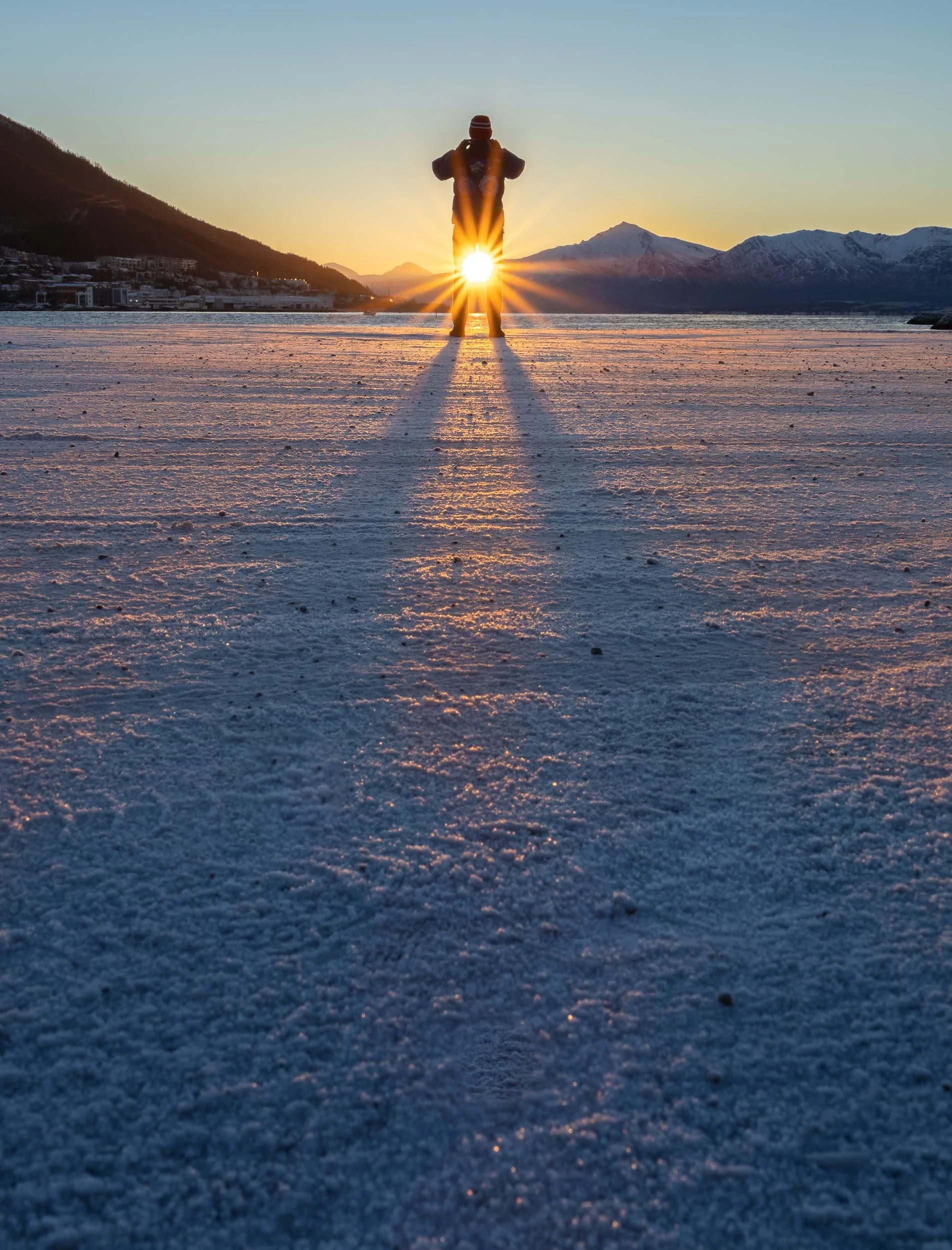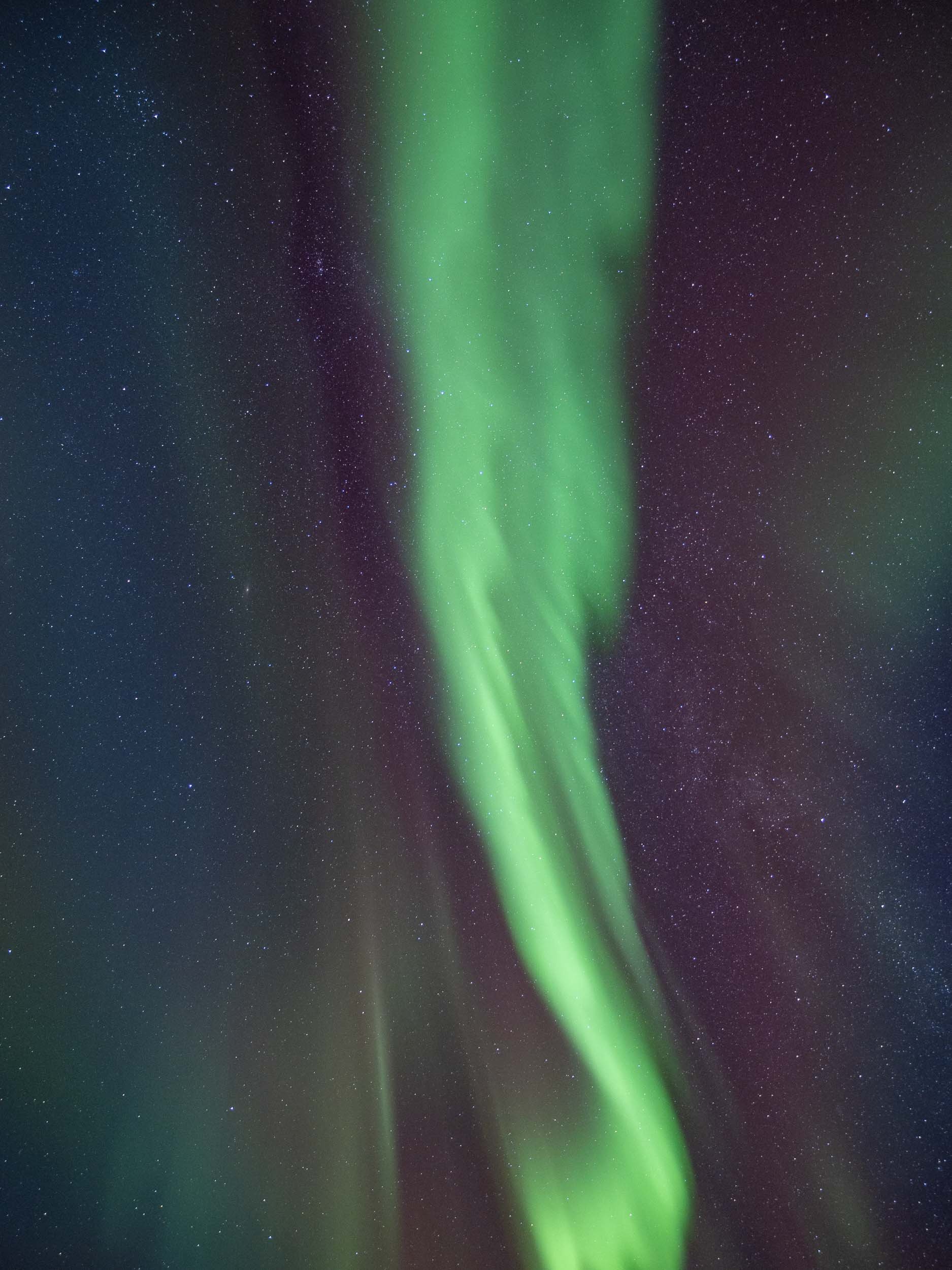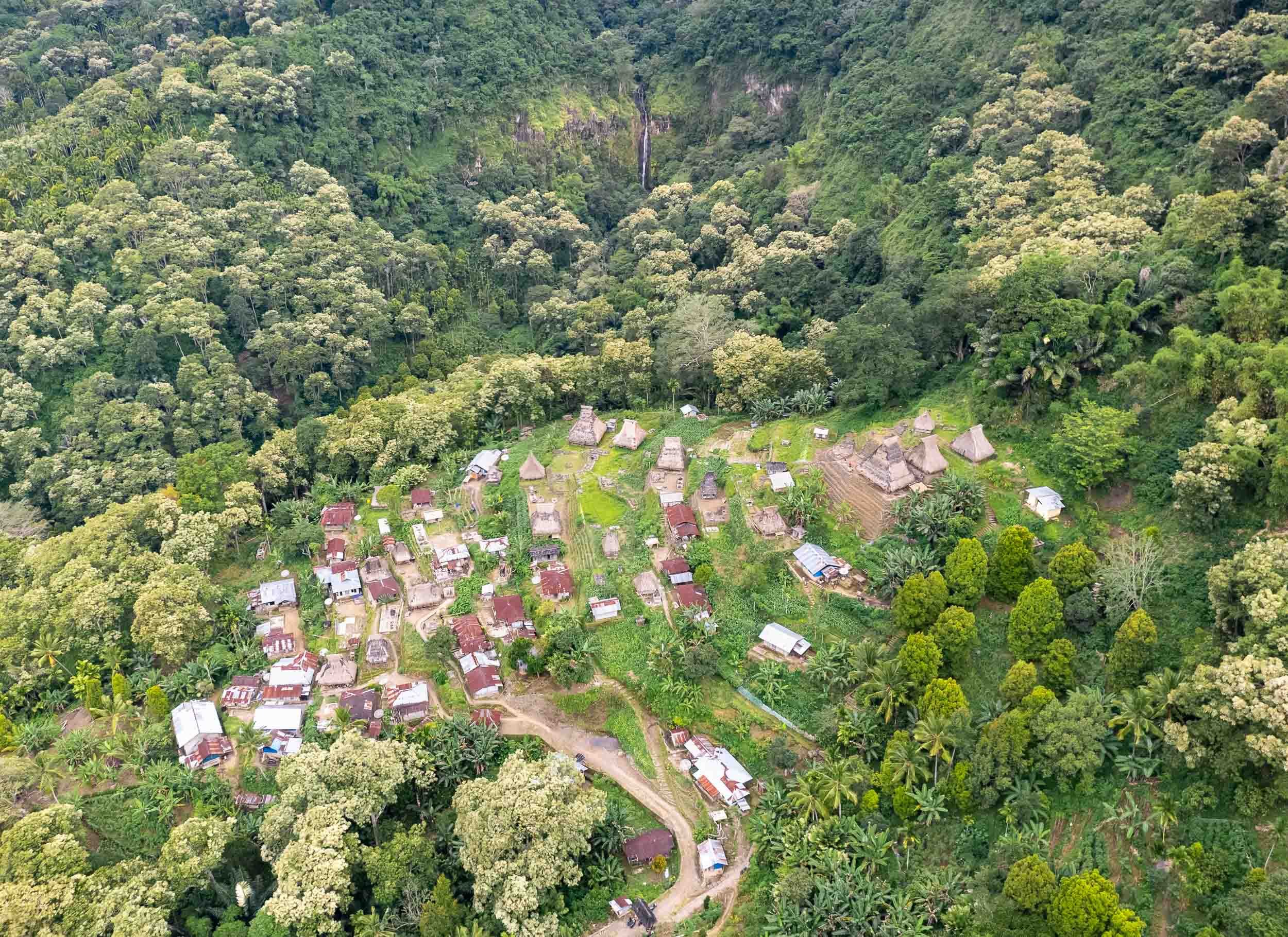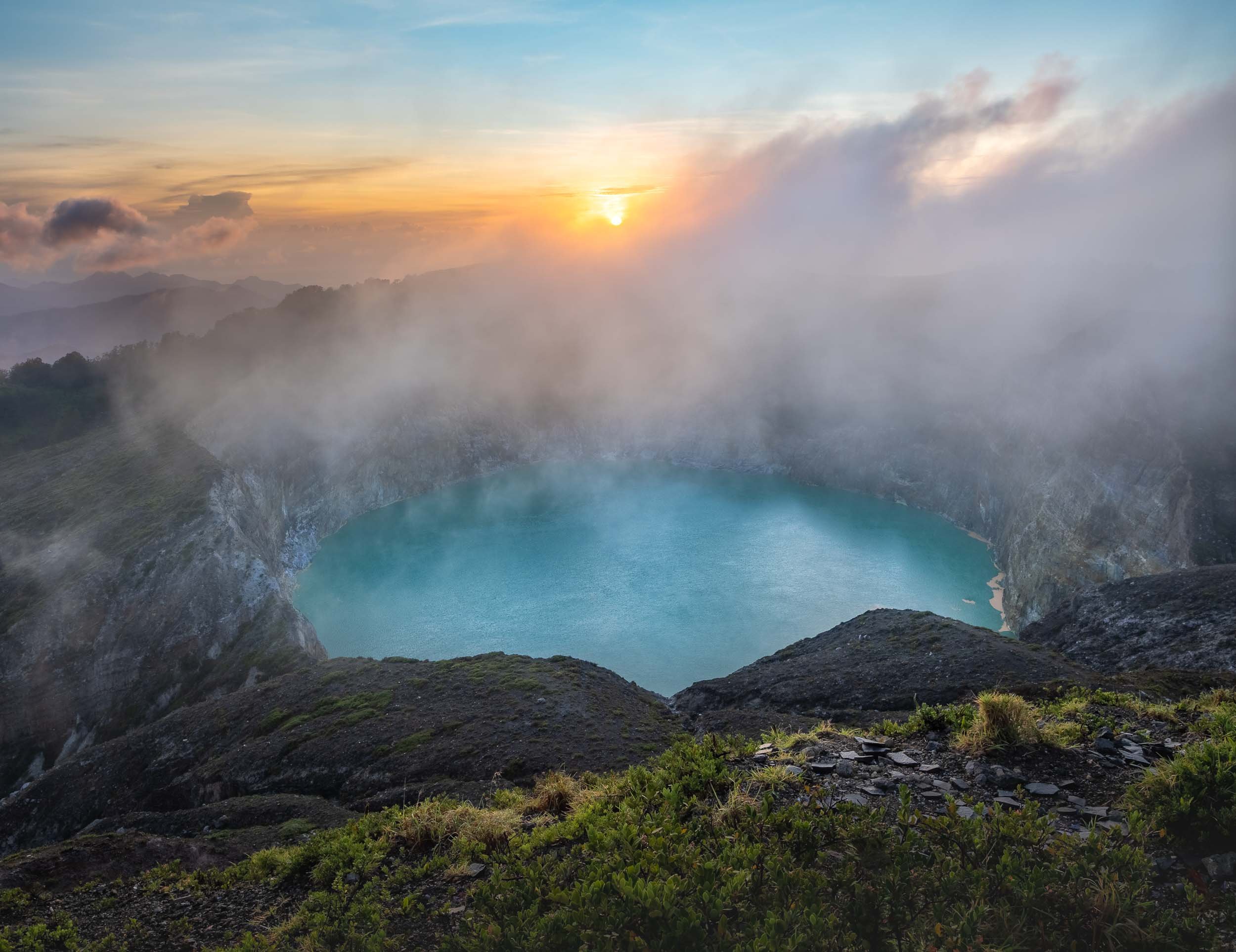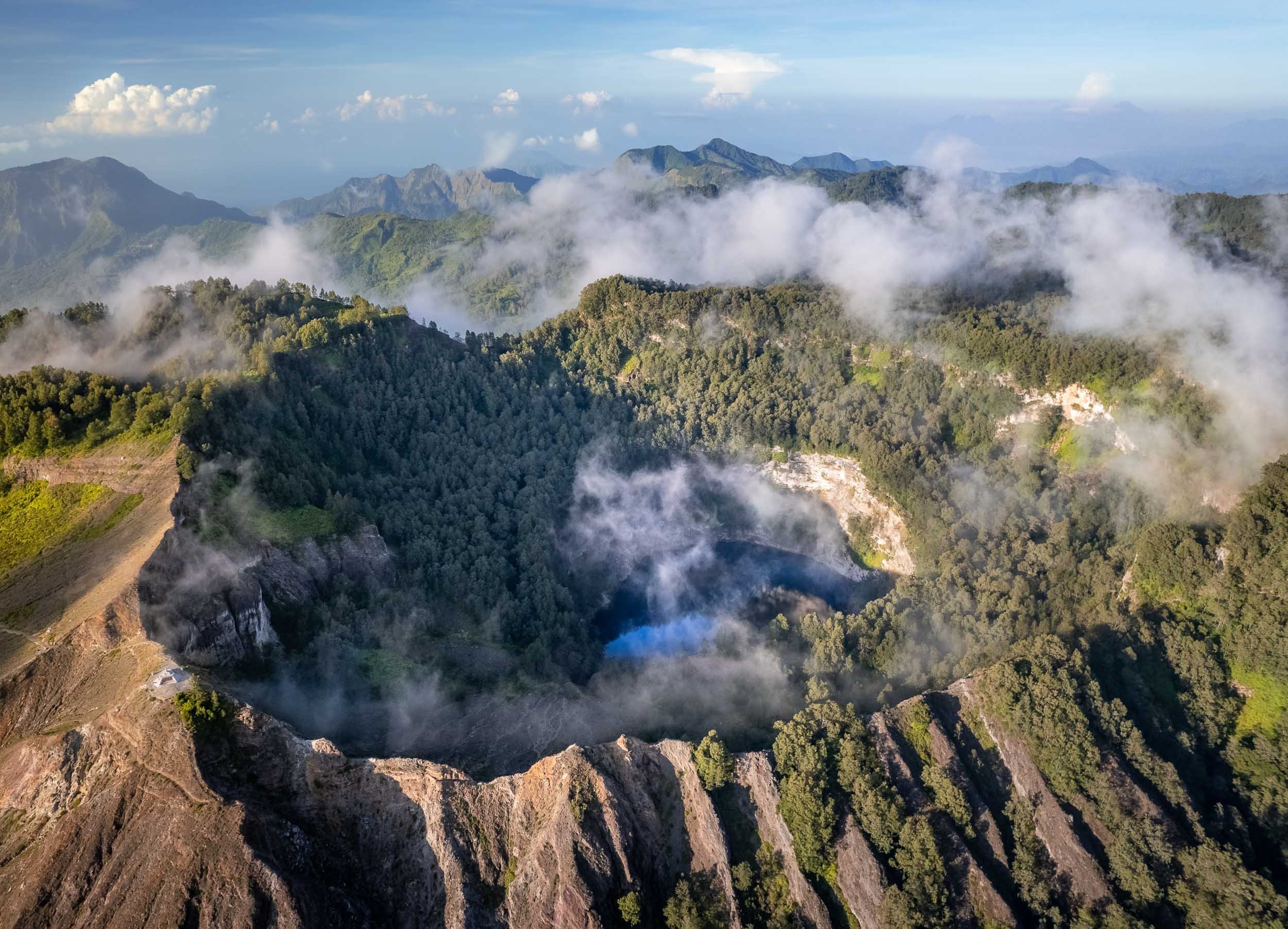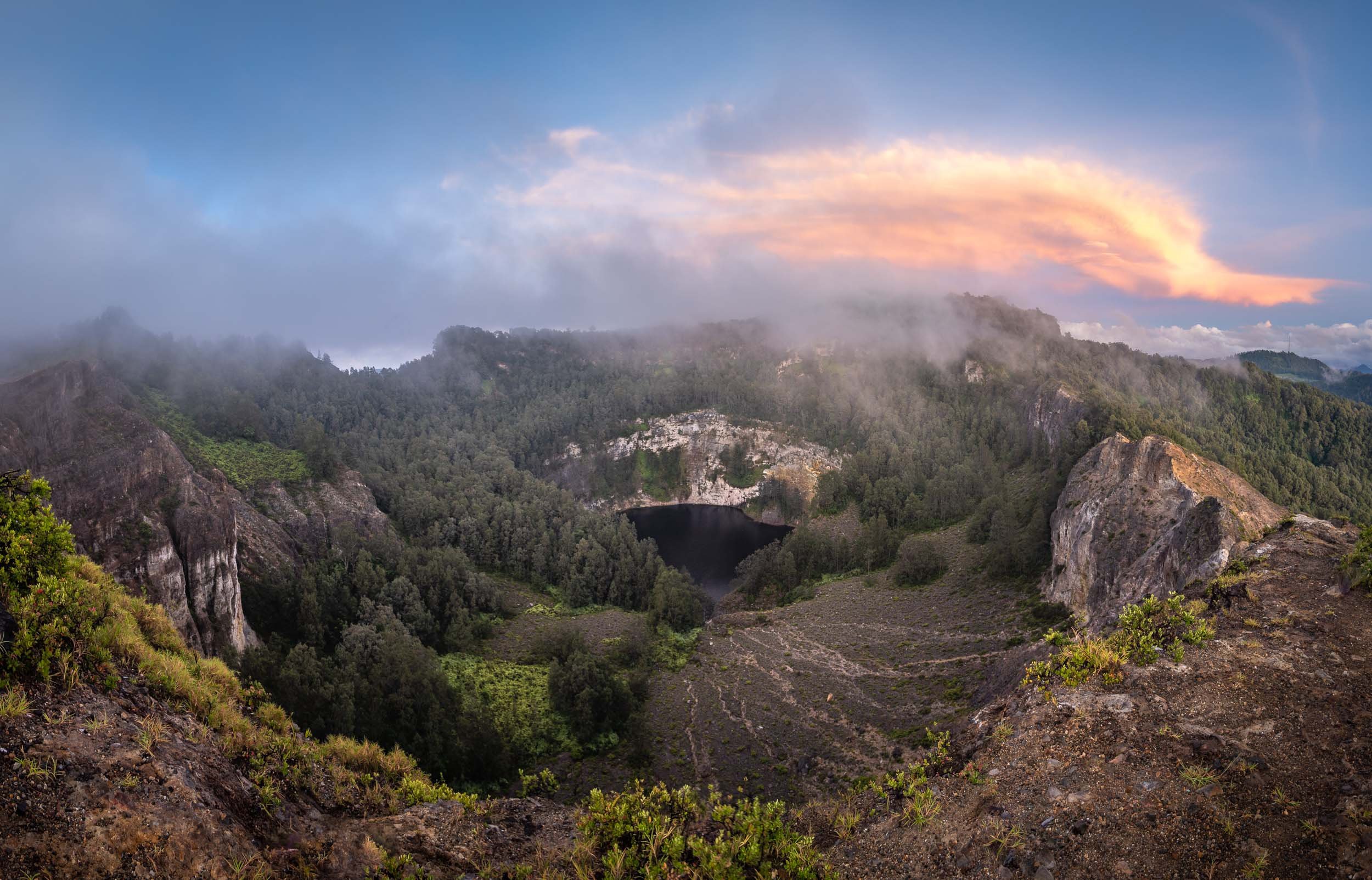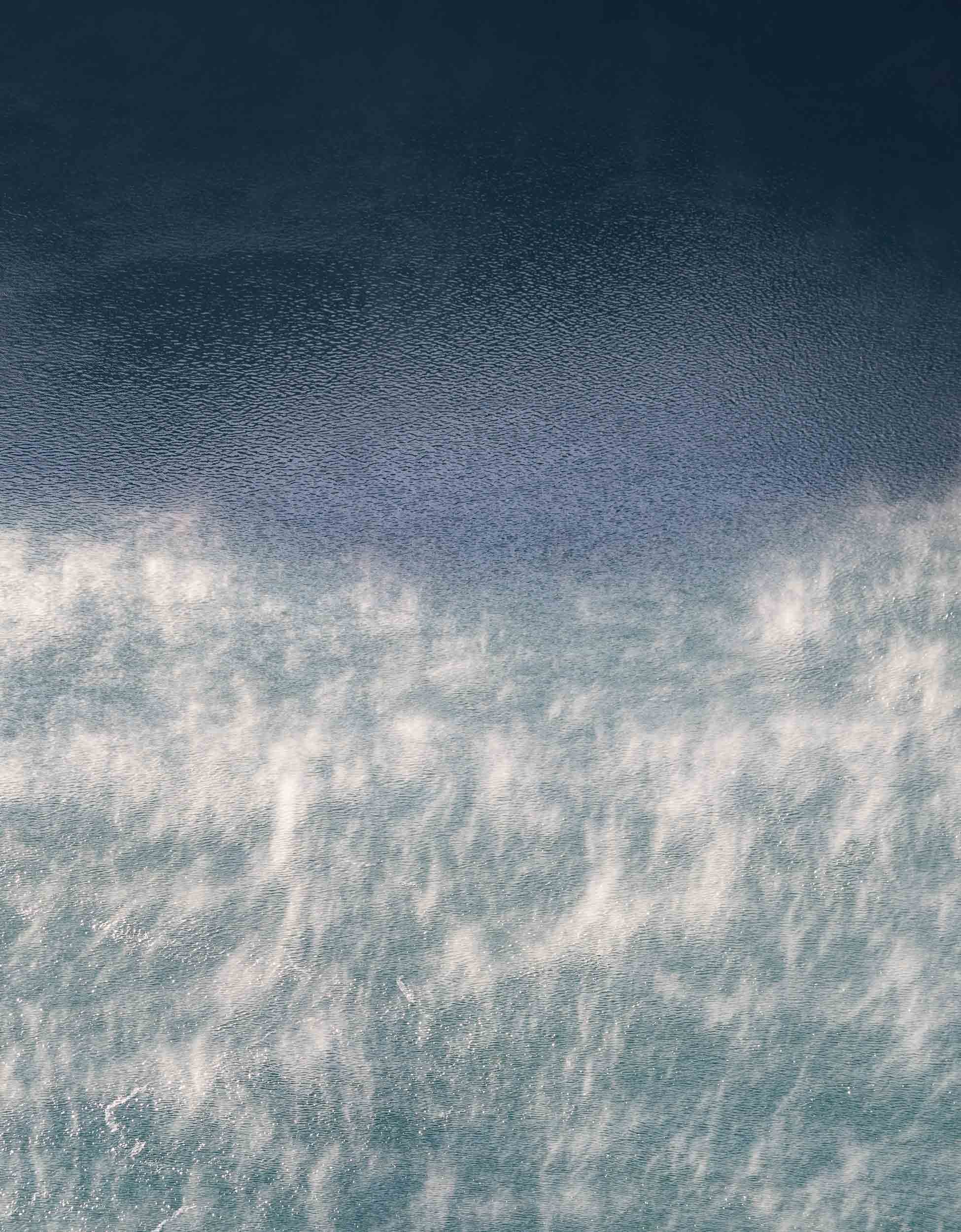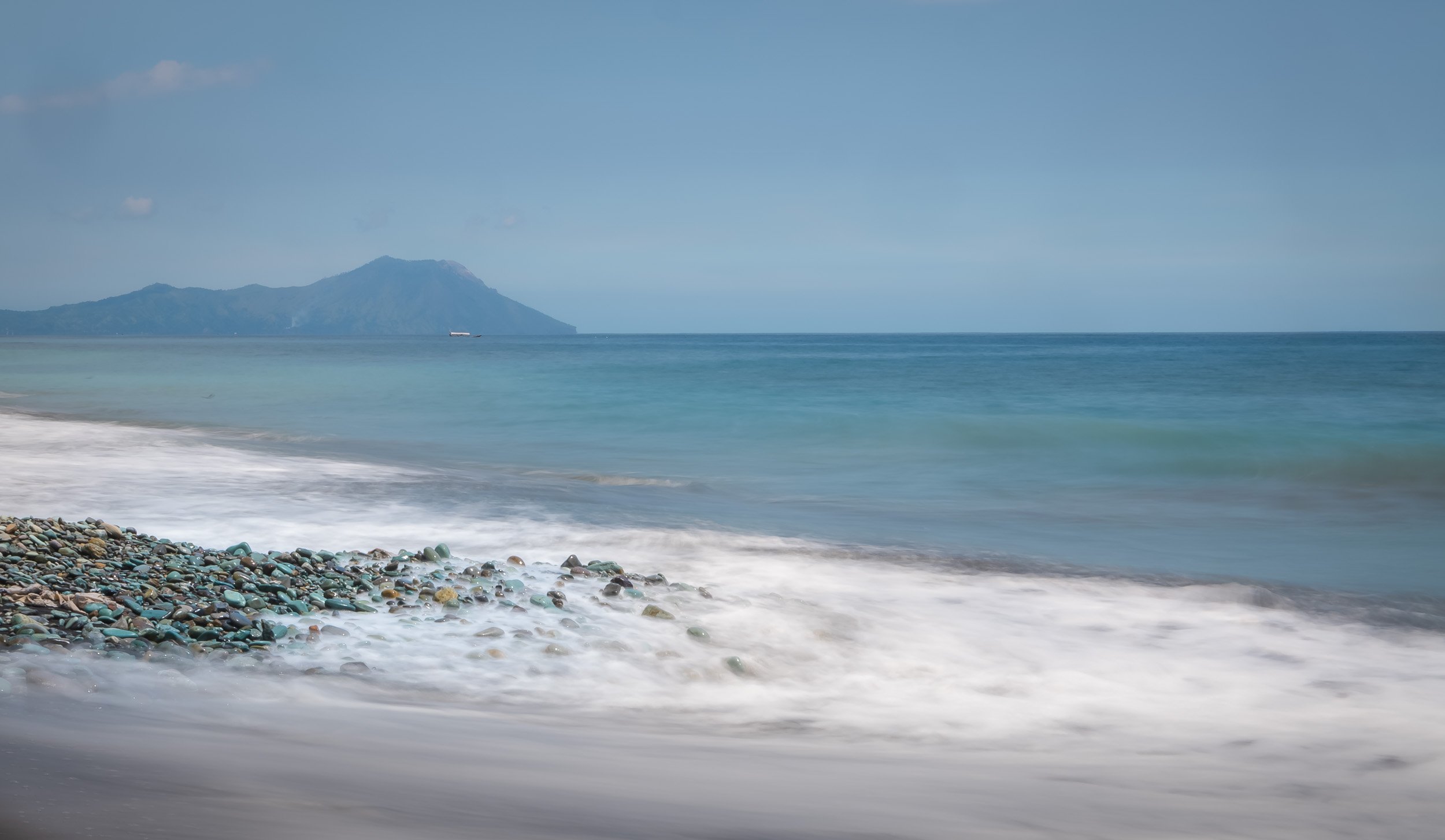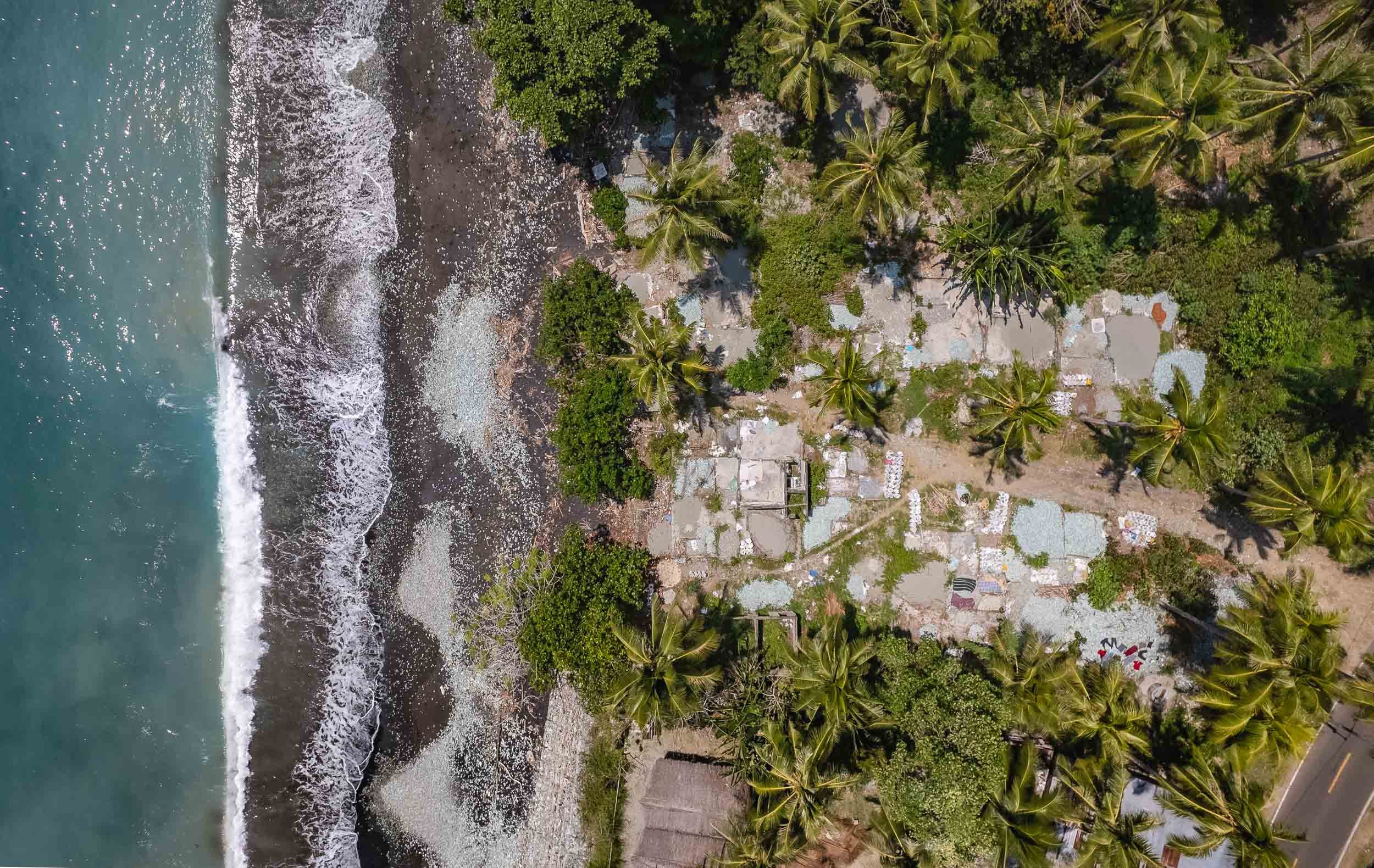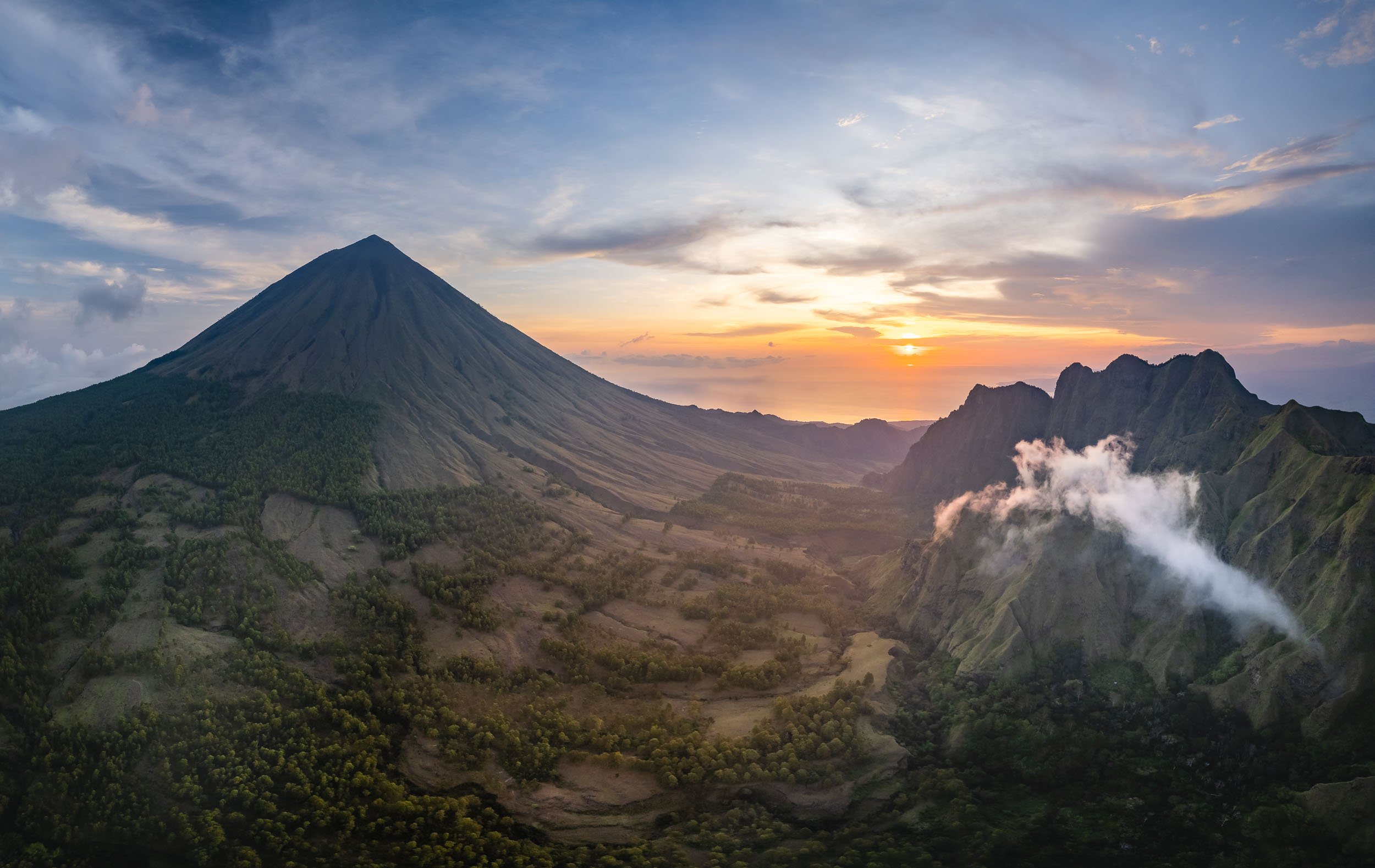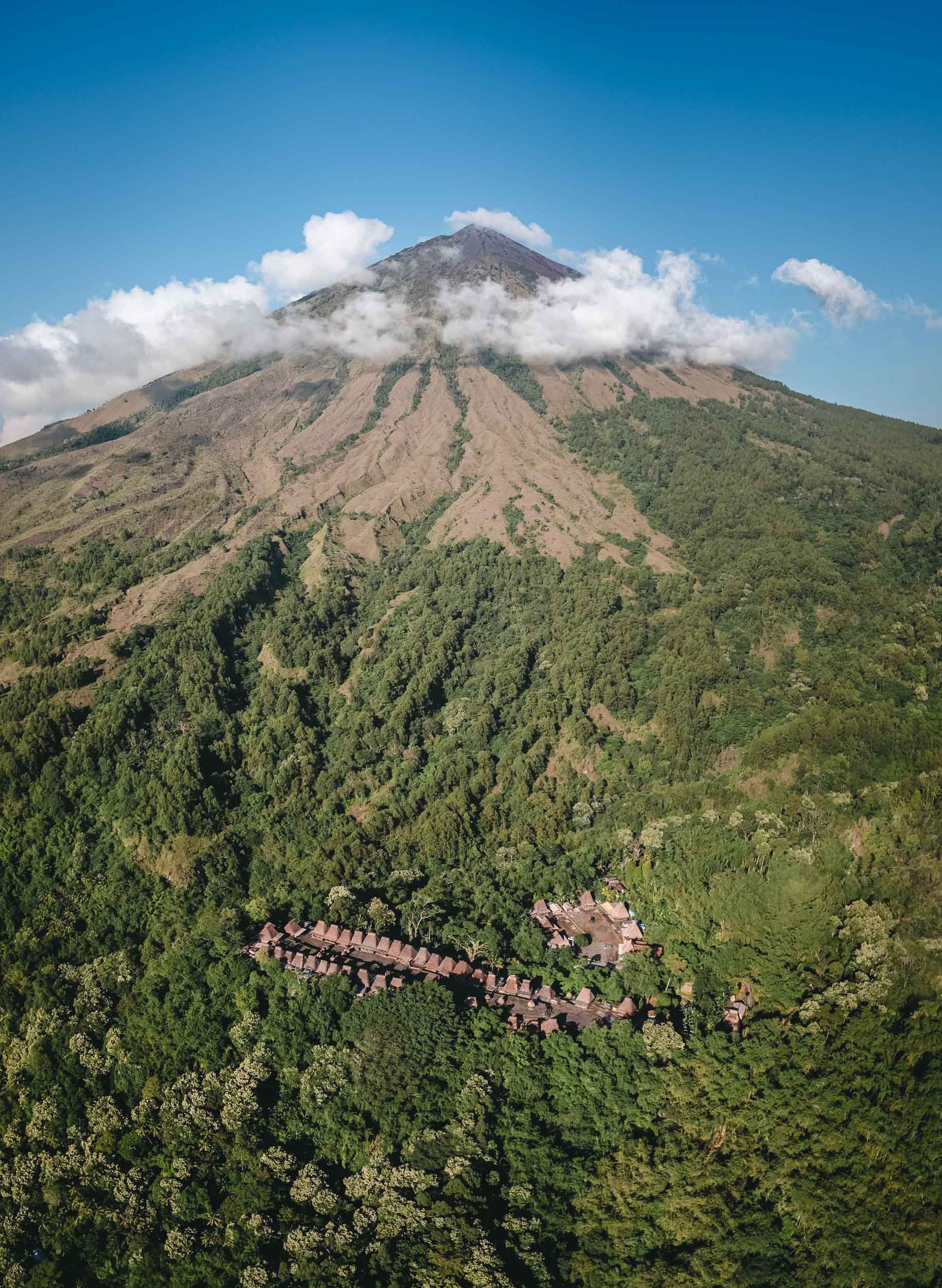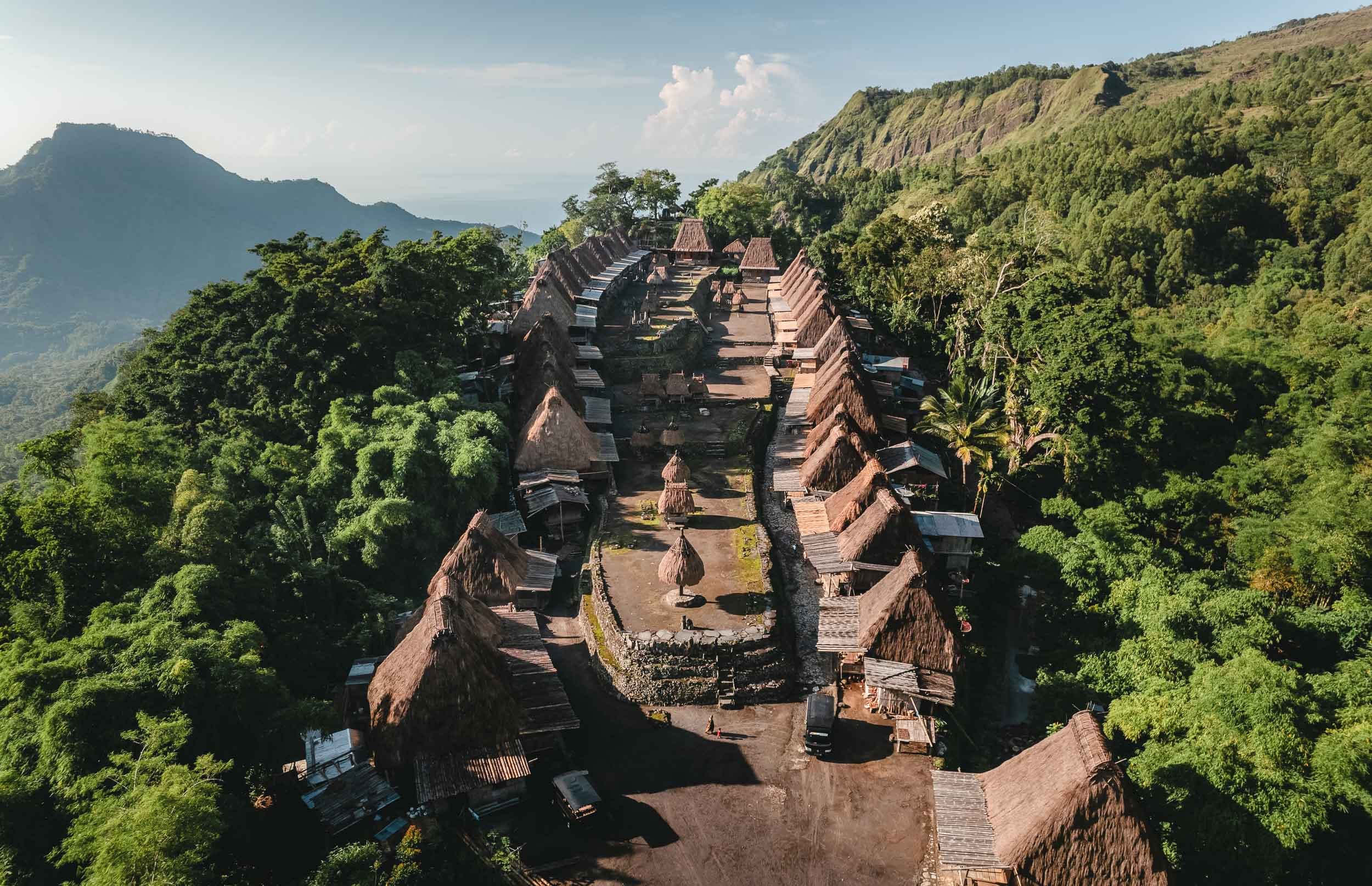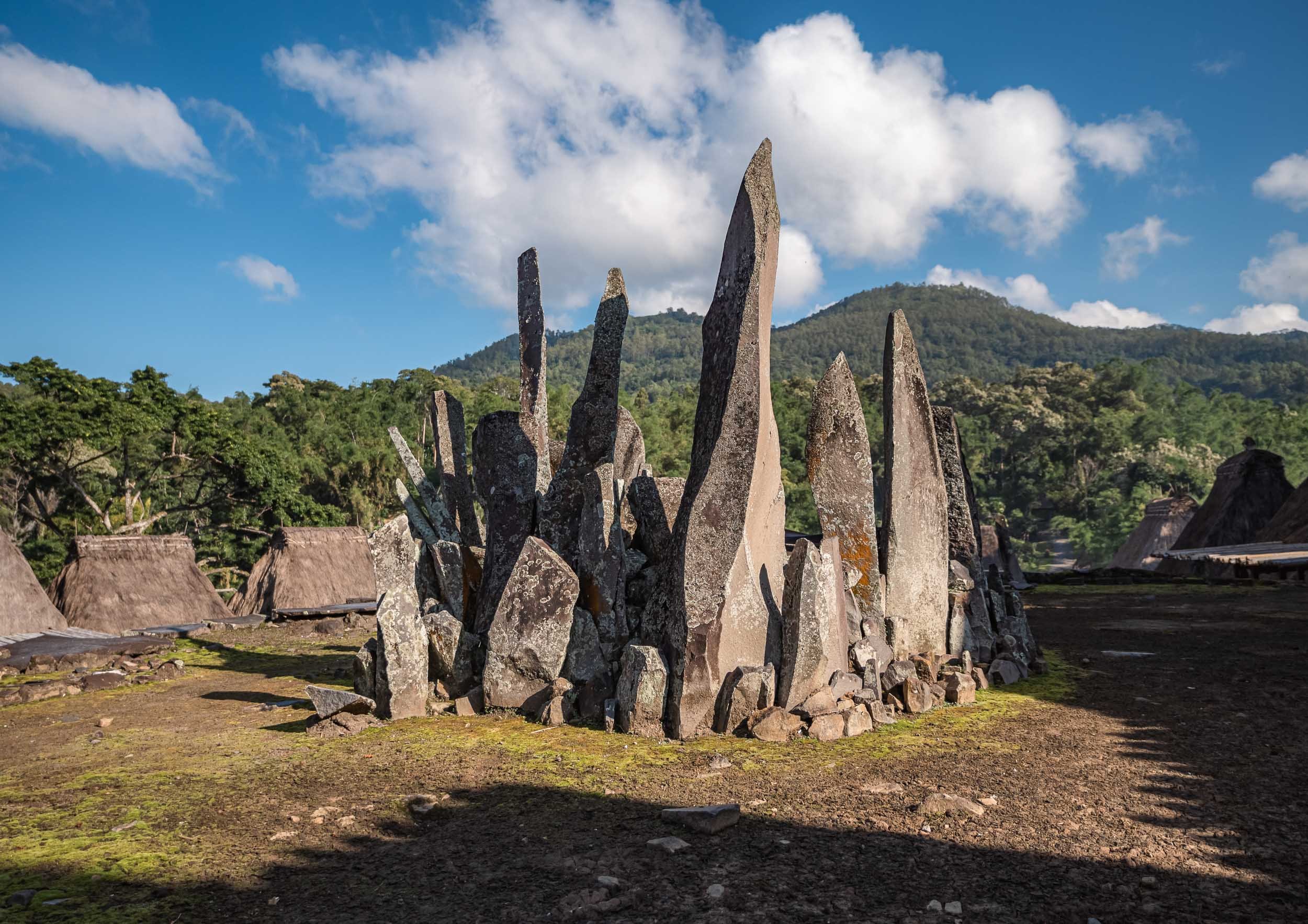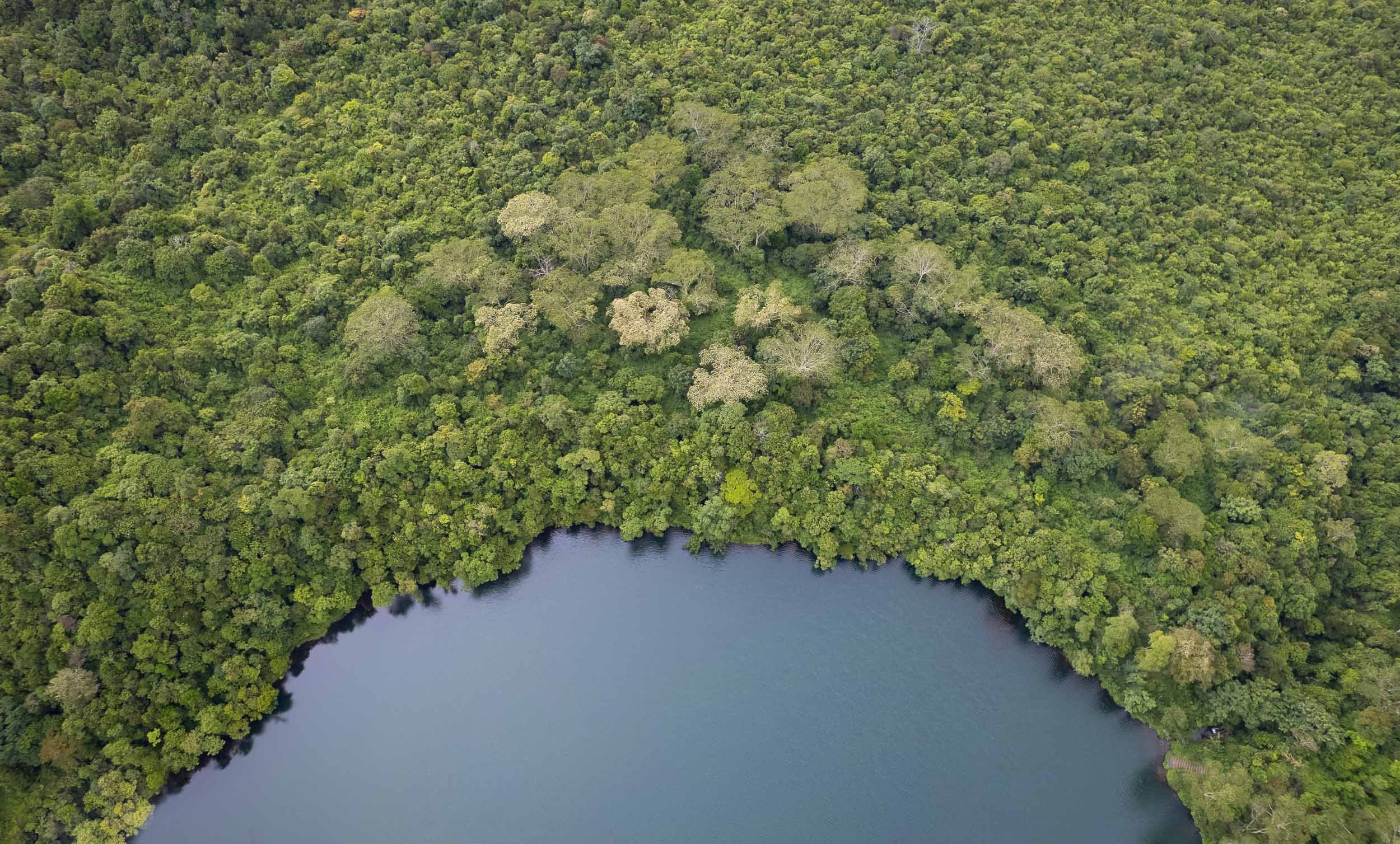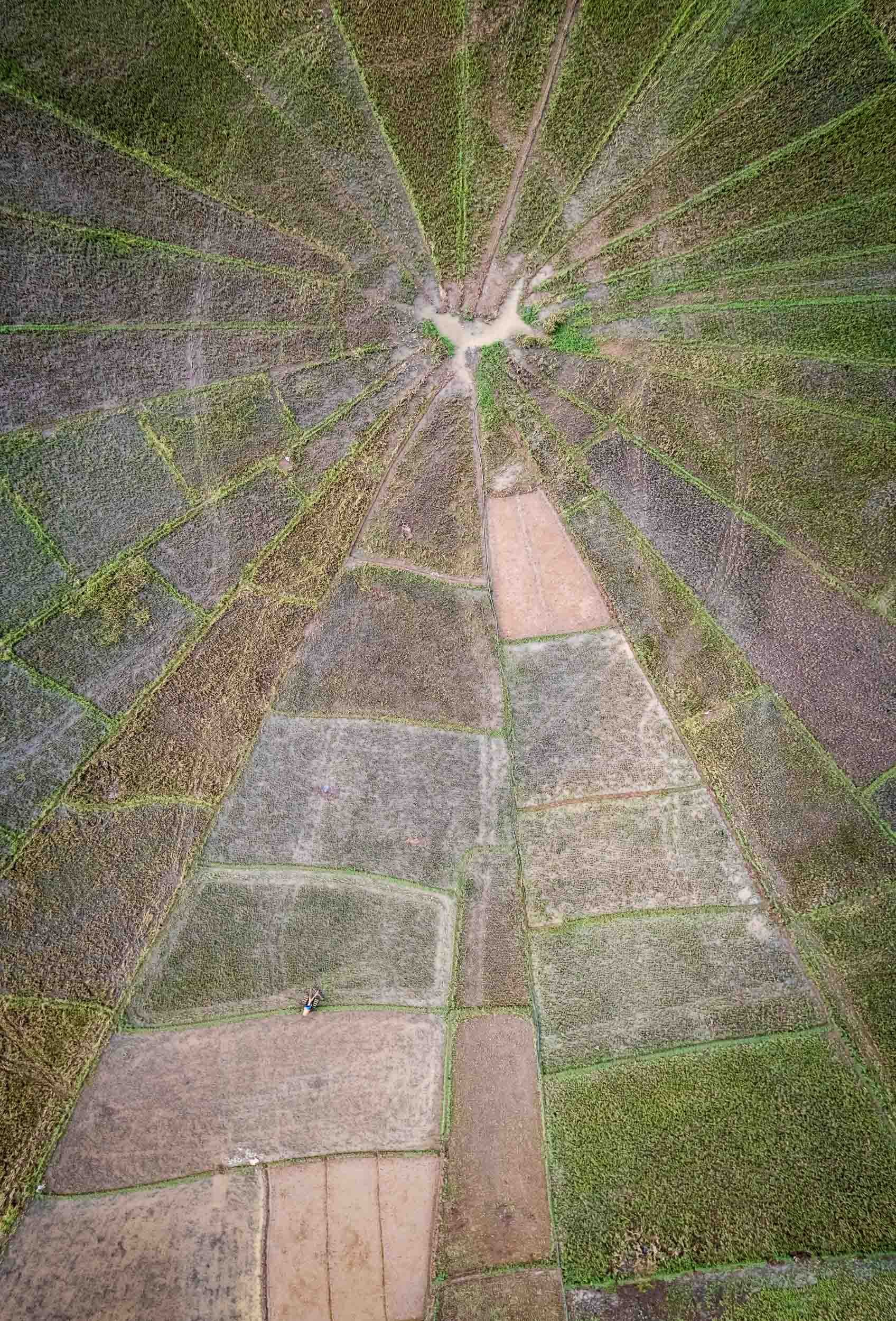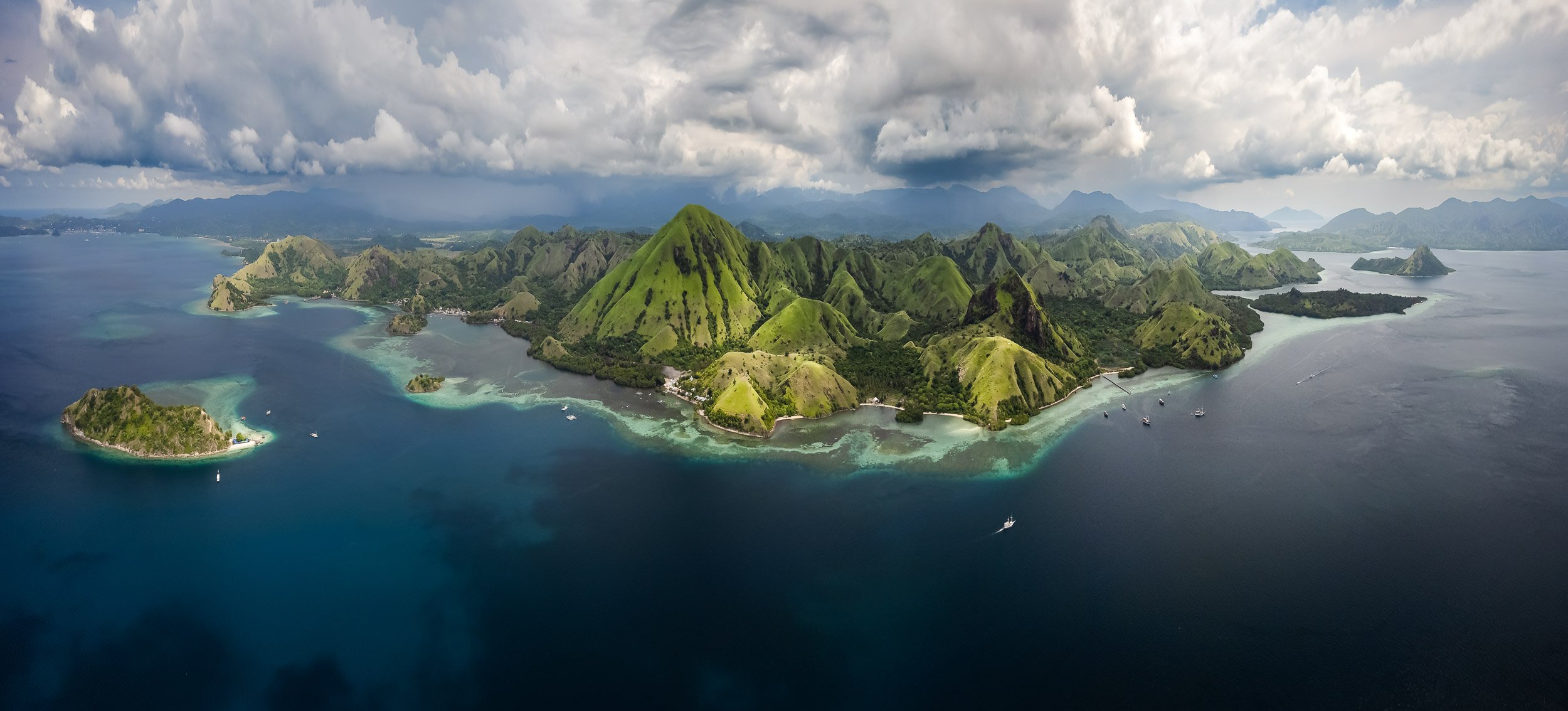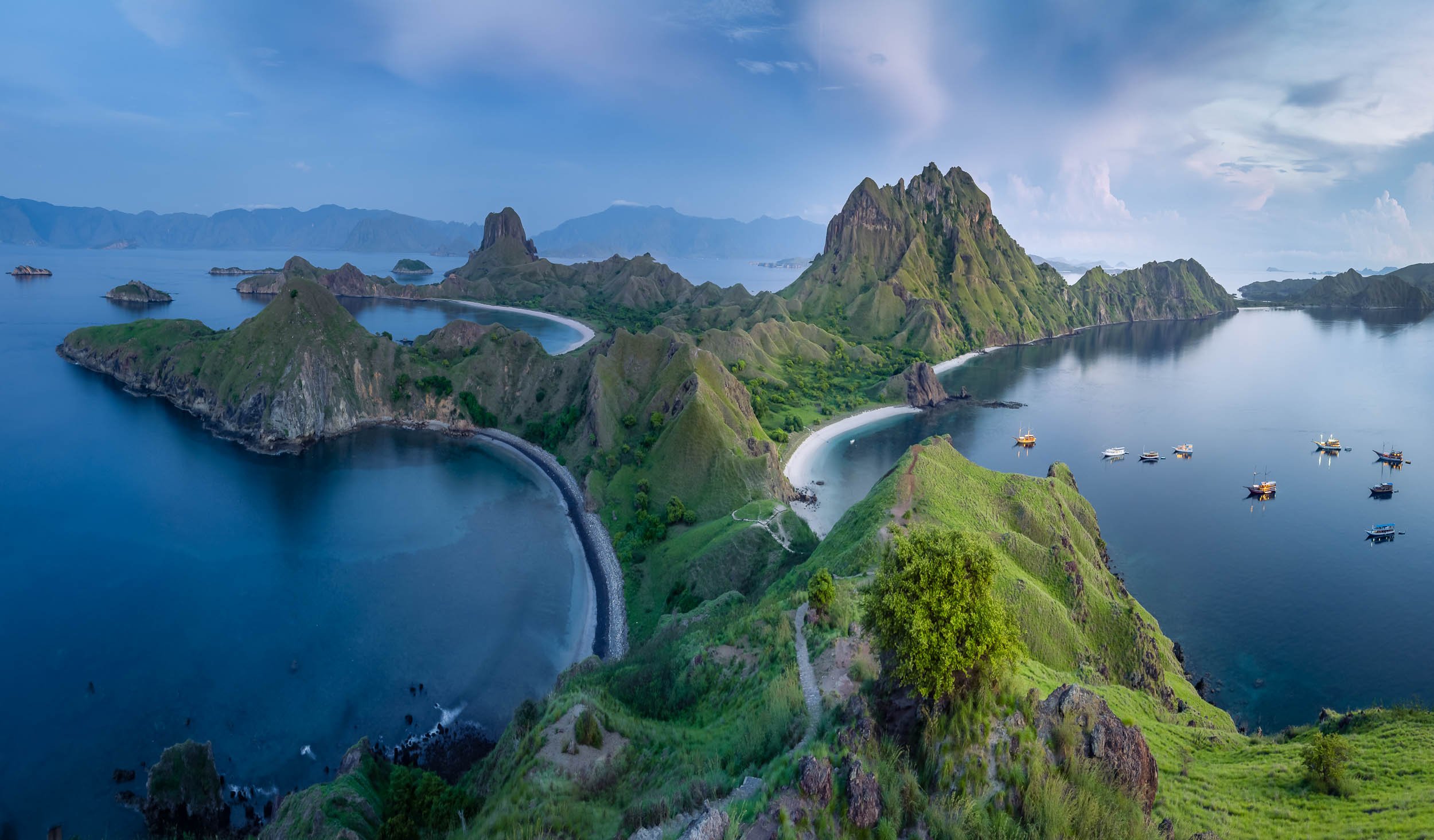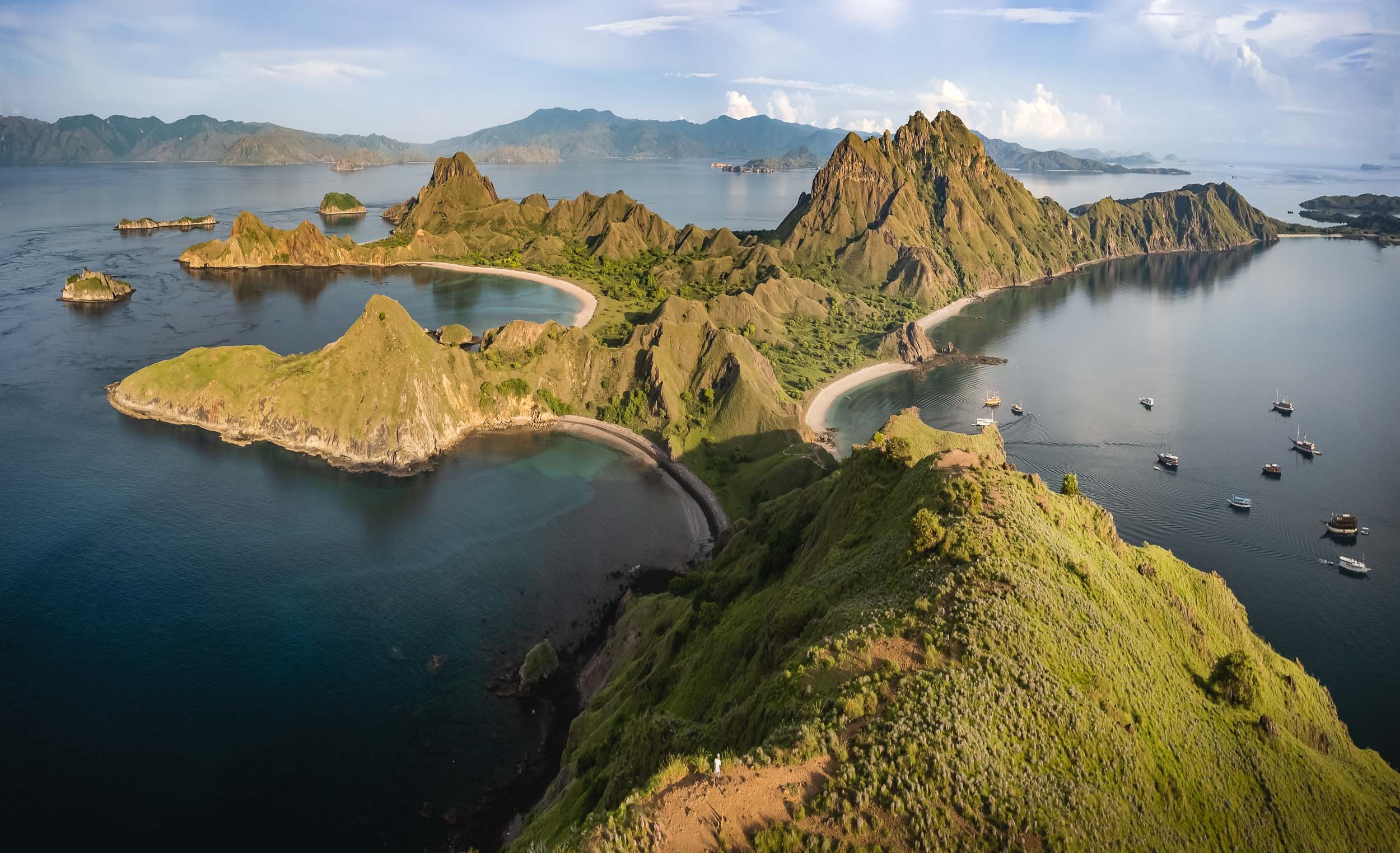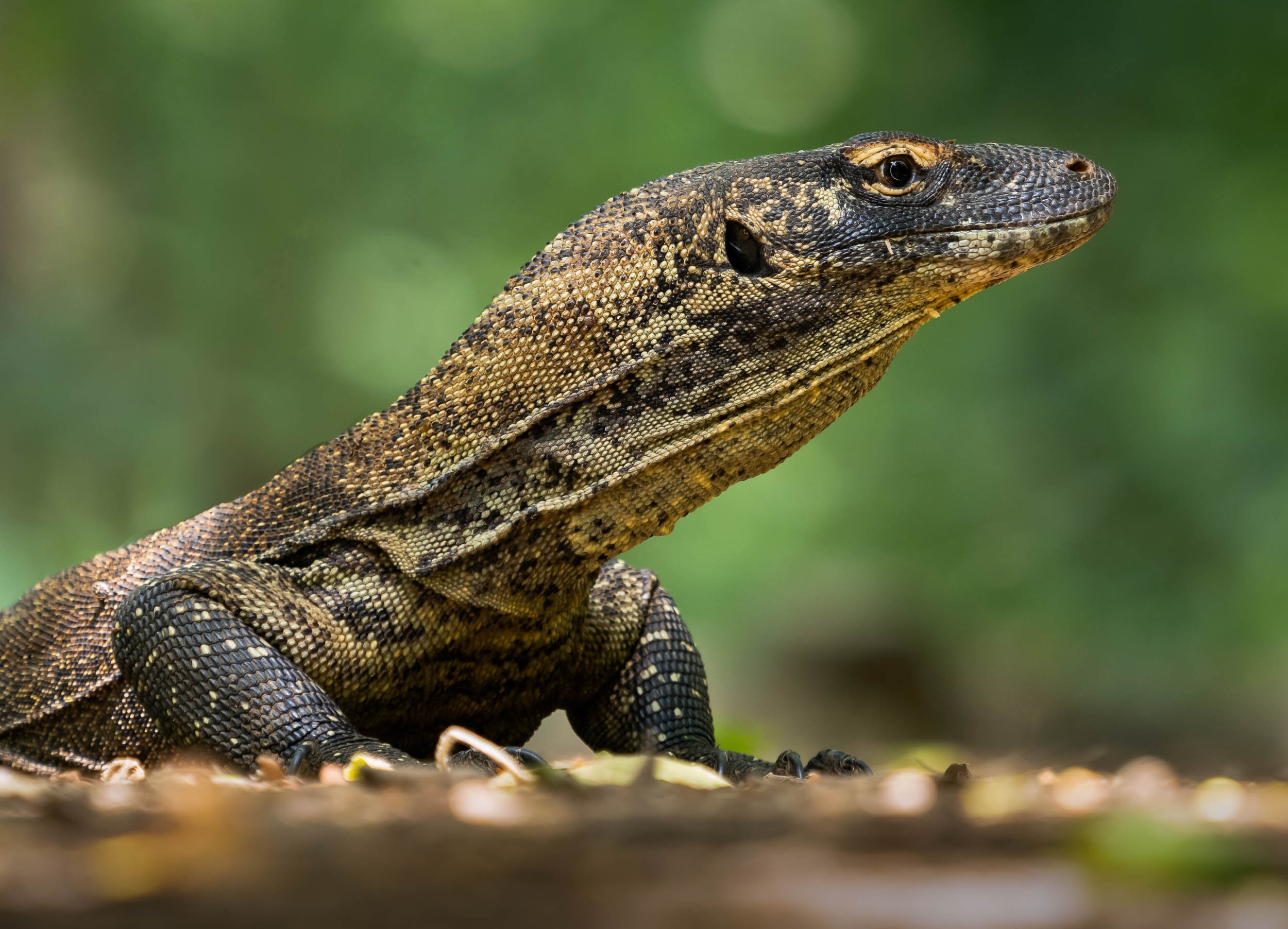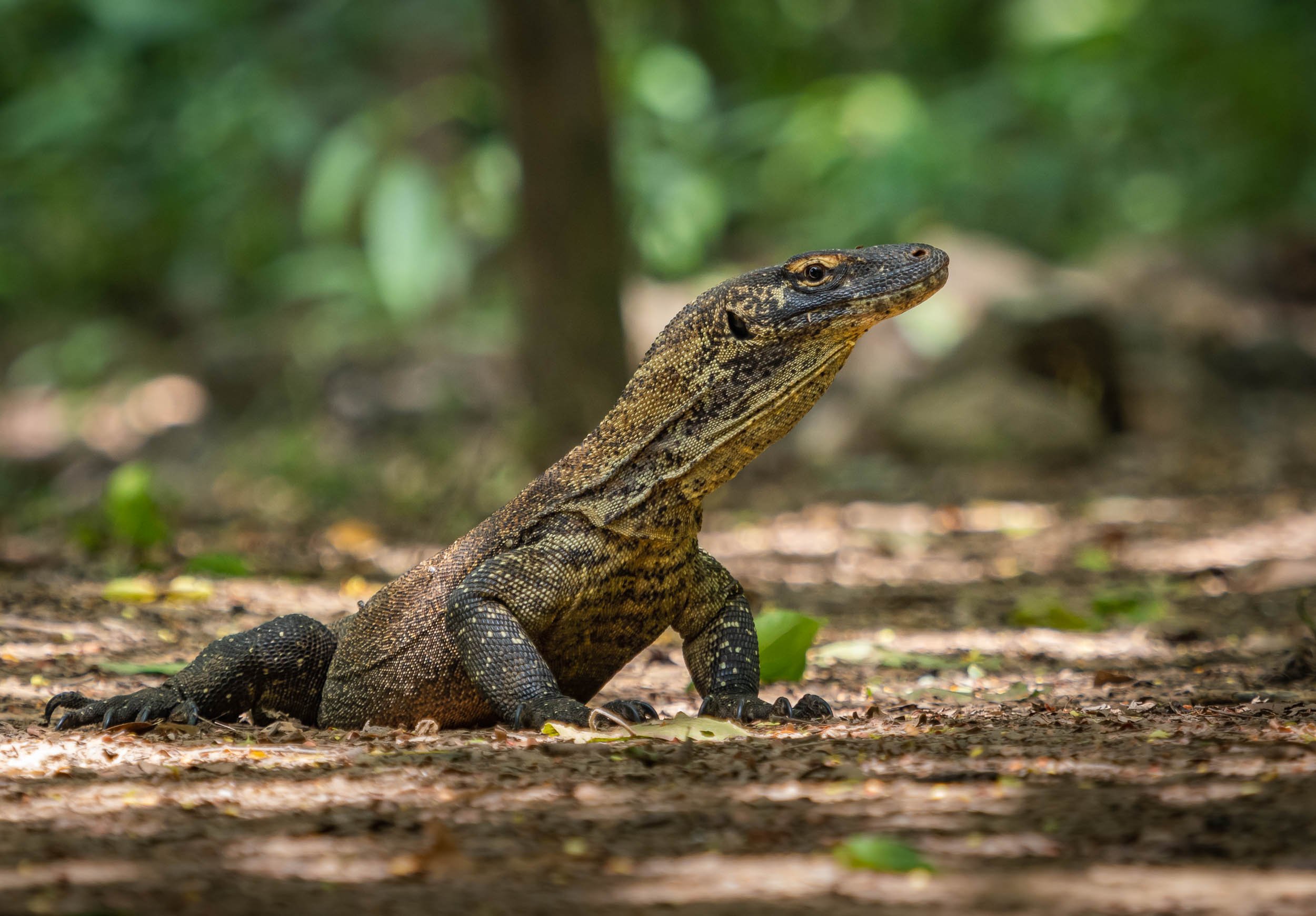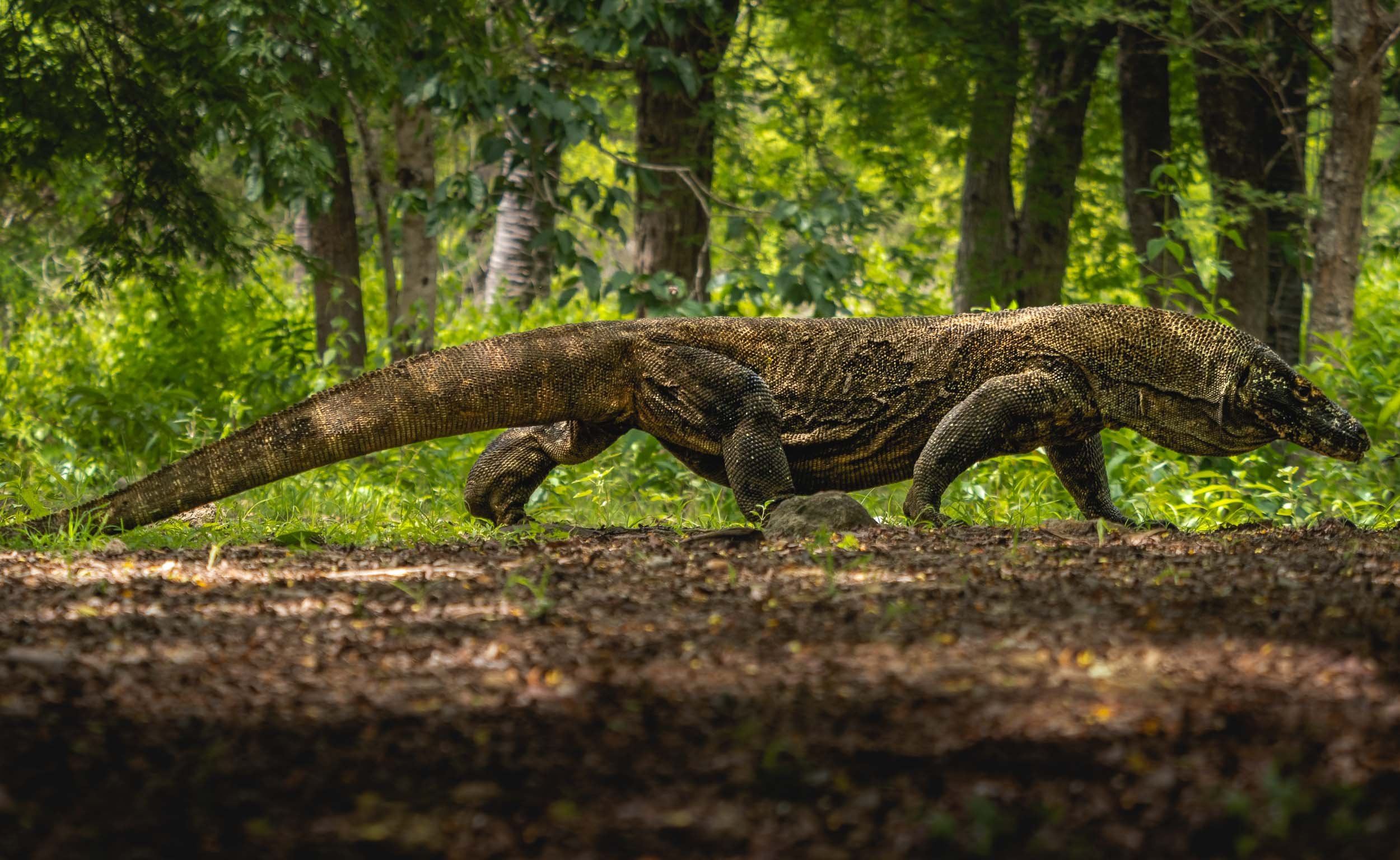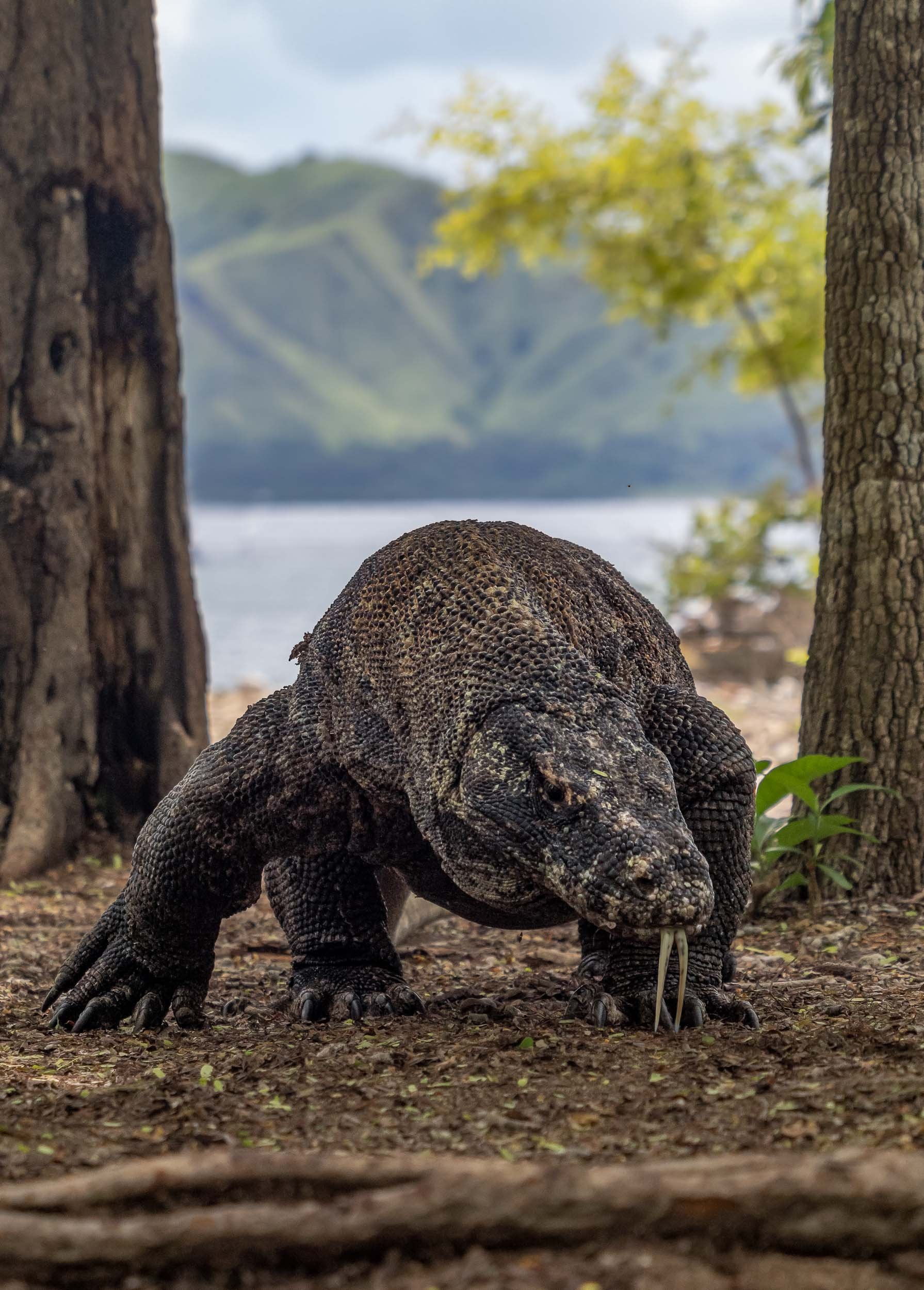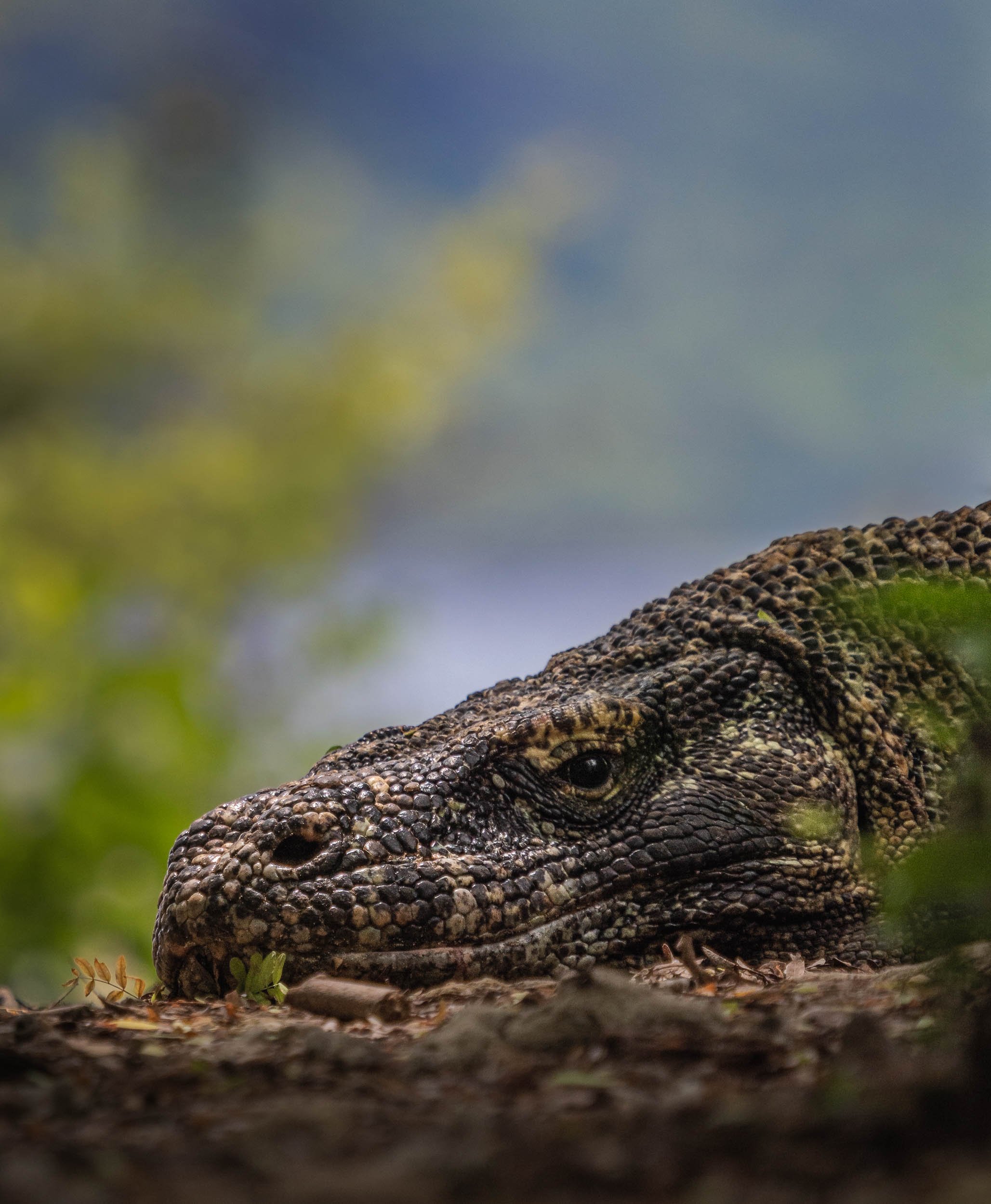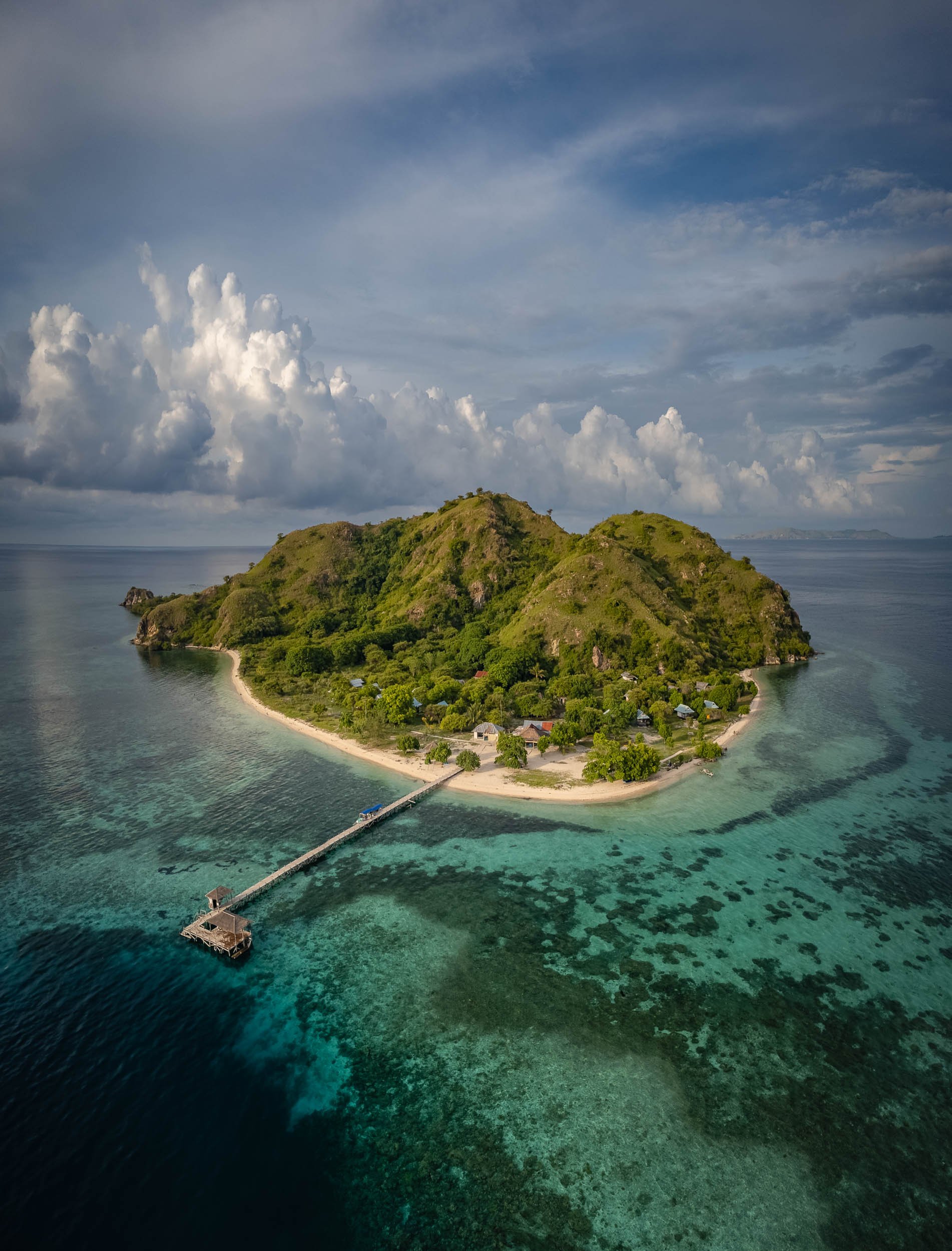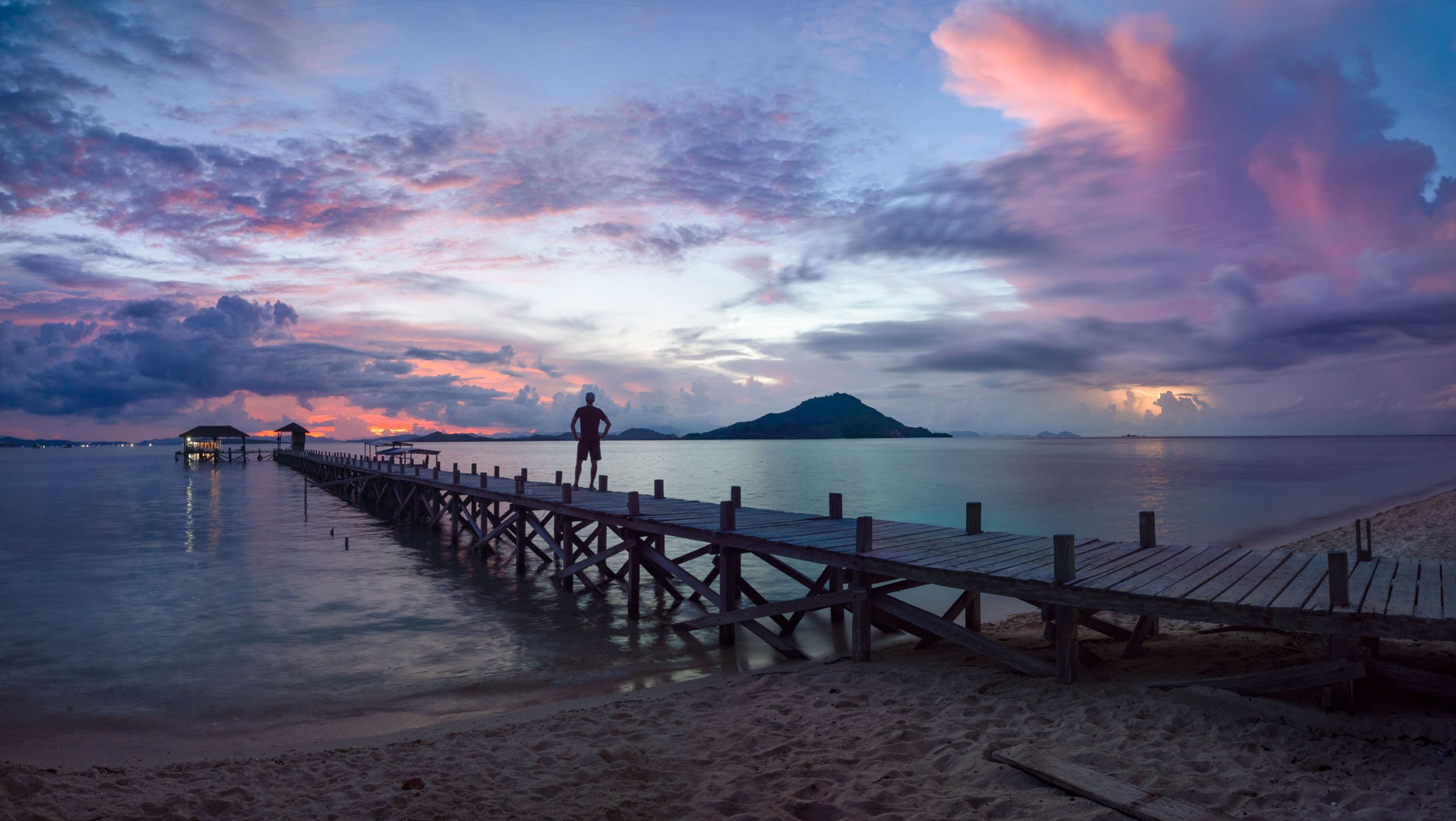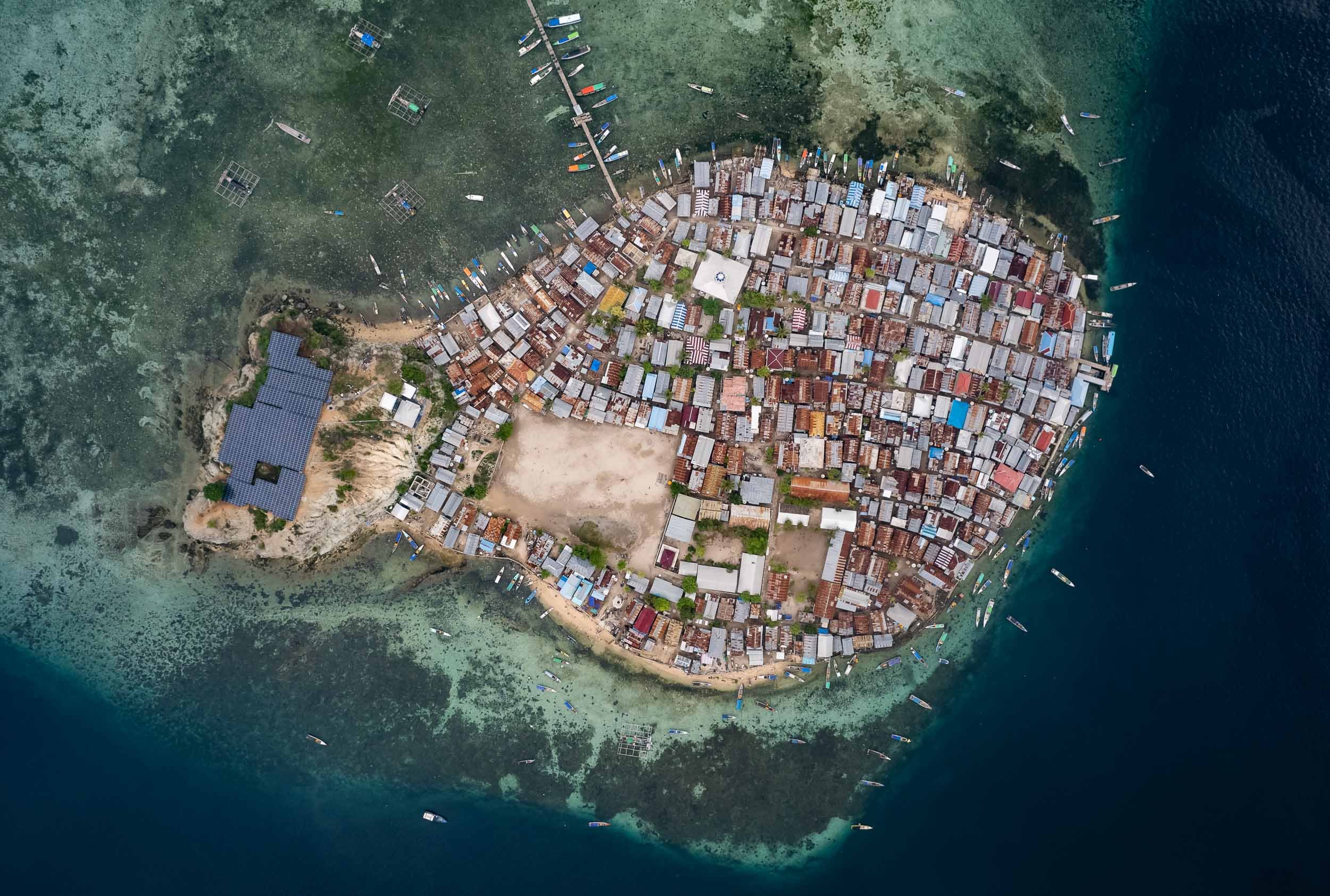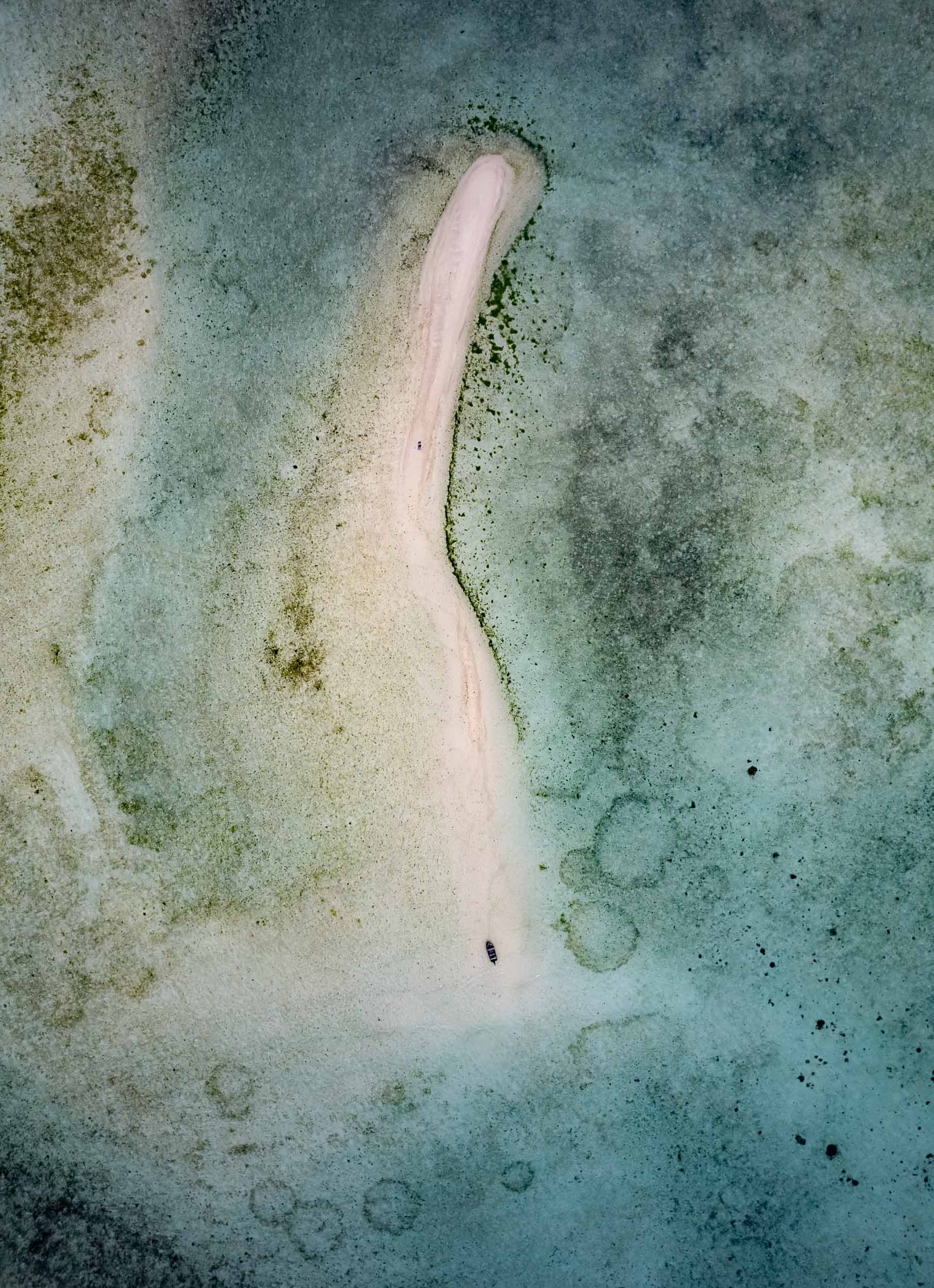Chasing Orcas & Auroras - Northern Norway
A successful expedition to find and swim with Orca whales, and chase the Northern Lights.
In the quest to go through my backlog of images and stories, here’s another adventure from late 2022 - exploring the north of Norway on the lookout for Orca whales, and hoping to see some Northern Lights on the way.
We started our trip from Tromso, taking a bus to Skjervoy, a small town in the northernmost part of Norway, far beyond the Arctic circle, where we boarded our boat, the Bergsund - home for the next week. Organized by https://www.orcanorway.info, this expedition is focused on finding orca around the fjords, and if the conditions are right, get into dry suits (or wet ones if you’re experienced), jump into a small dhingy boat, and with a bit of luck, snorkel and swim next to these amazing creatures. The time on the boat also includes several sessions by Pierre Robert de Latour, the “Orca Whisperer”, which culminate in the USEA certification for participants and really helps understand the behavior of orca in the wild.
On the Lookout
The daily ritual is trying to spot pods of orca whales in the vast sea around the boat - not an easy task, as they can travel very quickly and spend long stretches under water. We had a lucky mascot though that seemed to have helped a bit.
Humpbacks All Around
Aside from orcas, the area is home to a few groups of humpback whales during this time of the year. We had two great encounters, once from the boat and a bit of distance (the weather was not great) and once in the water, as they were feeding alongside the orca whales. The feeling of these creatures diving up a few meters away from you and whacking their flukes on the water is...intimidating to say the least.
Humpbacks breach frequently, and throw their bodies out of the water. Impressive, considering they weigh 40 tons and grow around 15 meters in length. This juvenile had not quite reached those numbers yet though.
Orca Encounters
The excitement when seeing them from a distance and being lucky enough to get close is difficult to describe. Their elegance in the water, social interactions, curiosity, and just sheer size makes them one of my favorite animals - as is often the case with wildlife, experiencing it in its natural environment provides a very different perspective to documentaries or zoos and changes your relationship to these animals forever.
Landscapes of the North
Even on days without wildlife encounters, the stunning fjords all around make for amazing scenery, either bathing in the low sun - there are only a few hours of sunshine each day this far north in the winter - or covered in clouds and adorned by dramatic overcast skies.
The light hits different up here…
Green Nights
We docked in a few different harbors for the night during the expedition, and had a good chance to see some Northern Lights - of course I couldn’t resist and went out to capture some of the colorful magic in the sky when the conditions were right.
A short timelapse from the same spot. You’ll see my tiny self appear on the bottom right for a few frames at the end.
In the Water - The Main Event
Of course, the highlight of this trip was jumping into the water, knowing (or hoping) that there are orca whales that pass you close enough to see them, or even stick around while they are feeding. That sounds simple in principle, but it's often hard to anticipate their movement, approaching carefully and always ensuring to not interrupt their behavior with the dhingy.
The encounters are unpredictable and often very short - by the time you move around in your (huge, buoyant) dry suit, the animals might have reached the coast of Alaska 😉 and you’re only worried that none of that ice cold (5C) water enters the suit you have to wear for the next five hours.
I took all my under water footage with the iPhone in a case. This in principle delivers better results than a GoPro (and a more pleasant focal length) but it took me time to figure out how to avoid focus hunting and in general dealing with the new environment. Rest assured, next time I’ll know better and will have an underwater case for my trusty Olympus camera… Regardless of the photographic outcome, this was truly a privileged wildlife encounter, and ranks high up there for me, maybe only topped (if that) by my time with Craig, the elephant with the largest tusks in Africa.
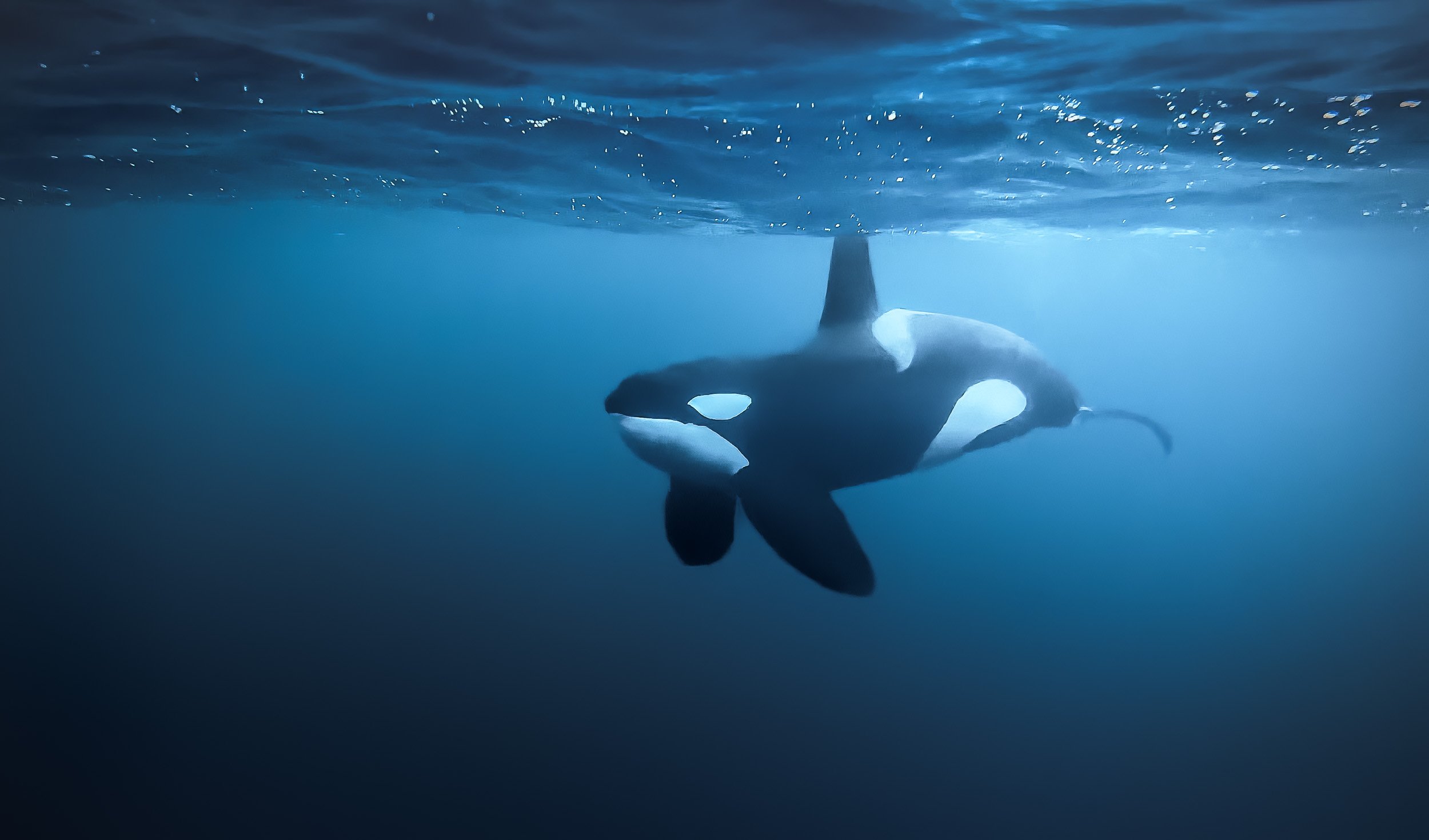
We had a few amazing encounters, including a feeding where a pod of orca started to work the bait ball. They surround a school of herring and use tail slaps to stun them, then calmly feed. The orcas were joined by a number of humpbacks, and it became a frenzy that was difficult to grasp. This was also the only moment where our guides wisely decided we should leave the water, not due to any aggression, but because a humpback fluke isn’t something you want to be any closer to than necessary. Despite that, I never had the feeling of being in danger. The approach Orcanorway takes is full of respect and appreciation for these animals, and unlike many other such encounters around the world, sanctioned and licensed by the local government.
Contrary to the reputation that’s associated with killer whales (it’s in the name already…), there has not been a single documented intentional attack of an orca on a human in the wild. Every incident occurred in captivity, and it’s not surprising given the conditions these jailed individuals have to live in for large parts of their lives.
Last Light in Tromsø
After a week on the boat it was time to head back to Tromso - which greeted us with a display of strong Northern Lights, easily outperforming the city’s light pollution. I spent one more day in the city before moving on to Finland (another blog in the backlog).
A Final Glimpse
This was taken at pretty much exactly at 12 noon on November 19th, 2022 - just 1 week later, the sun would no longer rise for another 6 weeks or so, only leaving a few hours of blue light during the day for Tromso’s population of 65,000.
Flores Island & Komodo - Indonesia Part 1
Exploring Flores island and the bordering Komodo National Park, part of the Lesser Sunda Islands in eastern Indonesia.
The amount of photos and videos I took over my 6 weeks in Indonesia has been slightly overwhelming, which is one of the reasons this blog didn’t see any of them yet. There are just too many incredible places to experience and document in this amazing country! We’ll start with the western part of Flores island (my kind of name) and the bordering Komodo National Park, part of the Lesser Sunda Islands in eastern Indonesia. I spent 6 pretty packed days here, 3 of them on a boat around the islands - take a look!
The video below will give you a pretty good overview of some of the most interesting places you get to explore in this part of Indonesia.
Ende & Kelimutu
My flight took me to the town of Ende, pretty much in the southern center of Flores (and I didn’t go much further east). The goal was to start with hiking up the Kelimutu Volcano in the first night. On the way, we stopped at some of the beautiful typical rice terraces, and the local Saga and Wologai villages to see some of the traditional houses common to the island.
The thatched roofs of Wologai village, one of the many traditional places where you can still observe the daily life of the locals. The houses follow the Lionese architectural style and the village is said to be 800 years old.
Kelimutu - Volcano of the Dead
An early start around 3am ensured that we’d reach the Kelimutu Volcano with its three lakes for sunrise. After an hour hike, the stairs along the last few hundred meters to the crater’s edge lead us into colorful clouds, which slowly faded away as the sun rose.
Close ups of the crater lakes, showing the smoke over the water and their different hues. Between January and November 2016, the colors of the crater lakes are said to have changed six times.
The way down leads through the Kelimutu National Park and its beautiful flora and fauna.
The Blue Stone Beach
We continued our journey in the morning after returning from the volcano. On the coastline in the south of the island lies another colorful phenomenon….
Volcano Village
Near the town of Bajawa lies the the small traditional village of Bena, one of the primary remnants of the preserved Ngada culture in the region.
The Ngada traditions date back 1200 years and can still be observed in the village, even though some of the locals now focus on selling souvenirs to tourists.
Some of the local villagers in the town - arrive early morning to observe some of the daily rituals.
From Bajawa to Ruteng
The road westwards led us past a small local distillery making Arag and fresh palm juice. The owner insisted on showing me how they are harvesting the fruit from the palm trees, climbing up to the top with a cigarette permanently attached to his lips. Understandable I suppose, he needed his hands free.
Some of you might know that I don’t drink (or like) alcohol, but of course I couldn’t refuse a sip after I saw the effort that went into making it. Let’s say it won’t change my stance, but on the other hand it wasn’t the worst alcohol I tried in Indonesia. More on that in another blog (watch out for my time in Borneo).
The clay oven powering the distillery. The entire process is based on locally made tools and tricks passed down through generations, such as these bamboo pipes.
The rain forest lake of Ranamese was our next stop, and rainy it was indeed. A small dry window in the clouds allowed me to get some aerial photos of this beautiful calm spot along the hilly road.
The Spider Web Rice Fields - Lingko
Heading west towards Labuan Bajo takes you past one of Flores’ most amazing attractions, the incredible rice fields shaped like spider webs. A visit during the right time of the year will allow you to see a green paradise full of rice plants, but the views during harvest as seen here are equally interesting.
Island Life and Dragon Hunt
From Labuan Bajo the trip continued straight onwards, boarding the houseboat that would be my home for the next 3 days, sailing around the islands of the Komodo National Park.
Padar Island
One of the larger islands in the archipelago is also one of the most beautiful. The views are worth the sunrise hike to the top - the earlier, the fewer people (as always).
Flore and Fauna are abundant, from deer to wild boar, as well as dolphins, and a large coral variety. Seeing deer on the beach felt slightly odd to me at first, having always associated them with forests.
The Last Remaining Dinosaur
Of course, the primary wildlife people want to see in Komodo National Park are the namesake dragons. It’s an apt description for these animals. This is the only region where the largest lizard in the world can still be found on a handful of islands, with around 3000 endangered individuals still surviving in the wild, most of them on Komodo Island.
Once I made it to Komodo Island, your time is limited as you walk through the forest with a guide in search of some of these magnificent animals, but luckily I did get to spot a few…Nevertheless, I’d recommend two tours and possibly visiting another island such as Rinca to increase your chances for nice observations (and photos).
We found two very large individuals close to the beach, observing them at rest for a while, before one of them got up and moved into the forest. This was my chance to capture some photos of them in action, with their large tongue leading the way, and them to their prey - in fact, they can sense almost 10km away in good conditions.
Through the Island Maze
Onwards through the island maze of Komodo, landing on Kanawa island, which was once home to a beautiful small resort.
The resort is no longer operating and what must have been cute little villas are now decaying, but resourceful locals have turned the beach into a makeshift bar and lounge place.
A Floating Fishing Village
Pulau Mesa is one of the few inhabited islands in the park. In fact, it is almost completely built up and home to a population of around 1500, the Bajau people - all of them extremely friendly and curious. I spent half a day exploring here and would definitely recommend visiting.
The island life is simple but happy, and people were always curious and friendly. It was one of my favorite towns in Indonesia.
Subscribe to my newsletter to get notified and don’t miss out on more Wonders of the Globe.
Enlaps Tikee 3 - Long Term Imaging Solution for Projects & Timelapse
My thoughts on the Tikee 3 Pro + long term imaging and Timelapse solution.
Over the years (many years in fact, my first ones were shot in 2011), I’ve enjoyed recording timelapse videos, compressing the progression of time and making resulting changes visible to the human observer.
One of my latest projects uses many different timelapse and recording techniques and combining them into a single video, documenting one of the many small Oktoberfest-like beer festivals in Germany, see below.
A few ago I was contacted by Enlaps, maker of a long term imaging solution ecosystem, including timelapse projects for construction, events, nature, weather, and similar scenes that can be interesting to observe, document, and analyze many hours, days, months, or even years.
They asked me if I’d be interested in having a go at using their camera and creating a small review. How could I say no to trying some new technology? See below the resulting (German with English subtitles) video, or read on for the English review.
Enlaps Tikee 3 Pro +
The product it's all about is a time-lapse camera called the Tikee 3 Pro +, which is the version I got from Enlaps. And this is a product that I find quite exciting, and would have liked to have had it myself a few years ago.
It didn't exist then, or rather I didn't know that the first versions already existed, so when Enlaps offered me this camera to test, I was immediately interested.
The Tikee is a time-lapse camera that can record all kinds of time-lapses, but is primarily designed for longer time-lapses, for example outdoors. That's a good thing, because my parents are currently building a new house here in Germany, and I intend to install the Tikee there on the construction site as well, to be able to test it in real life in a real operation.
Features & Cost
First, let's take a closer look at the camera - Enlaps provided me with a Tikee 3 Pro+, which is the more feature-rich and also slightly more expensive of the two available variations. The difference is particularly evident in the flexibility of the recording modes, more on that later, the exterior and the general principle of the two cameras as well as the quality is more or less identical.
The camera in this version costs 1800 euros. Also, Enlaps sent me a stainless steel mounting arm, which normally costs 180 EUR, and a mounting kit for 42 EUR. There are other useful accessories, such as an anti-theft chain and lens protectors, which I think would be particularly useful in the field.
Where we are on the subject of costs, the Tikee is available with a cloud platform. There's a free version, but the really interesting stuff starts at €59 per month per camera, or €35 per month if you buy a full year. More expensive variants for enterprise functions, such as access management and automatic person blurring can also be very useful, but are not absolutely necessary for everyone.
At first you might think that 1800 EUR plus accessories and monthly software costs is quite a handsome price, but that always depends on what you want to achieve and what you compare the whole thing to.
Personally, I don't know of any comparable product that seems so sophisticated in this simplicity, but let's take a closer look at why I think that: The Tikee itself is quite small and light, weighing less than 2kg, 20 square centimeters in size and 7cm high.
And it has some exciting built-in features: First of all, it has 2 built-in lenses with an aperture of 2.8 and a sensor of 16 MP each. This gives wide-angle panorama shots with a viewing angle of 220 degrees and a resolution of 6k.
The viewing angles of the two lenses will also be merged automatically, which means you don't have to do it manually, which can get really annoying. I've tried this before ;) With a resolution of 6k you can zoom and pan in the viewing angle and still have acceptable quality. In addition, the Tikee has a built-in directional solar panel that you can fold up and rotate and swivel here, and powers the built-in battery so that you can record your time-lapse in almost all configurations independent of a power source. Appropriately, it is also connected to the Internet either with WiFi or 4G LTE, which means you don’t necessarily need a wired Internet connection to load the pictures onto the cloud platform. The exception to this is DNG format images, if you want to use them to get more dynamic range and edit the images manually you have to save them internally and then download them from the camera, only JPGs are sent to the cloud.
On the back we find an SD card slot next to the SIM card, a power button and a manual trigger, as well as an input for an additional solar panel and a USB port that can also be used for charging. In addition, a fastening ring for the anti-theft device, as well as the possibility of screwing on the underside. The camera is IP66 ratedand also has built in GPS so you always know where it is even when you are out in the field.
MyTikee Cloud
On the myTikee Web Platform, you can view and configure the data from your Tikee camera, as well as create and group portfolios of multiple Tikees. By the way, there is also the possibility to add a normal IP camera, of course not with all the functions that the Tikee offers, but that can still be useful. If you want to generate timelapse videos, there is of course the option to only select certain days or times, such as only weekdays or working hours, but also functions with artificial intelligence, such as automatic selection of only sunny days.
Of course, this can be very exciting for long-term recordings, where you don't want to have the switch between sun and clouds all the time. The system also generates a kind of best of list of selected videos and photos of the best scenes or weather conditions, which lend themselves to further editing and direct sharing without much effort.
There are also somewhat more advanced functions such as a “before \ after” split image, i.e. different periods of time on the left and right of the image or automatic fade between different periods of time. usable eg for building site progress or winter/summer, good/bad weather, etc. For commercial purposes there is also the blur people or certain areas function to guarantee data protection. Since recently there are also AI-supported analysis functions such as recognizing people and counting them, and automatic recognition of construction equipment, vehicles, which can then be visualized etc.
The link to the feed can be shared privately and publicly and also in your own / others websites are integrated, as well as exported with up to 6k for further processing. Incidentally, the web app will soon also be available in German, says Enlaps, currently it is in English and French.
Summary
All in all, as far as I can tell, the Tikee is a very mature product, which is aimed at quite specific areas of application, but thanks to some flexibility it can be used very widely. Comparable results and functions for a similar price are difficult to find, or involve a lot of personal effort and handicraft work, even in post-processing. Of course, such options offer more flexibility, e.g. to choose a focal length, etc., but never the same simplicity and possibly more costs.
If you are looking for a camera that is easy to install and use to document projects such as construction site time-lapse, weather and wave conditions on the beach, snow in the mountains, setting up events, etc., I think you are in the right place. Little infrastructure requirements due to the built-in solar panel, battery and 4G LTE make it very easy.
If I had to criticize a few points, I would probably say that the camera delivers night shots of acceptable quality, but of course it is not suitable for things like the Milky Way etc. A small personal annoyance for me is the USB connection, which is a micro USB - most of my products have already been converted to USB-C and the extra cable is sometimes annoying, but not so dramatic as you rarely have to connect to the Tikee.
A theoretical problem that I could still see is that the lenses fog up when shooting in high humidity or frost. Some external solution with a kind of heating sleeve controlled by the Tikee, for example 10 minutes before the start of the recording, could be desirable. Of course, this has consequences for battery life, one would have to consider that.
Nevertheless, in my opinion, Enlaps has built a very exciting product that enables new recording scenarios and, above all, makes long-term time-lapse easier and more accessible. The many interesting aspects of the mytikee platform also make me positive that a lot of functions are still being developed here, so the options for data analysis are of course endless.
In any case, I am very positively impressed. If you have any questions, please leave them in the comments, I will definitely create more videos in the next few weeks, particularly on setting up and configuring the Tikee.

